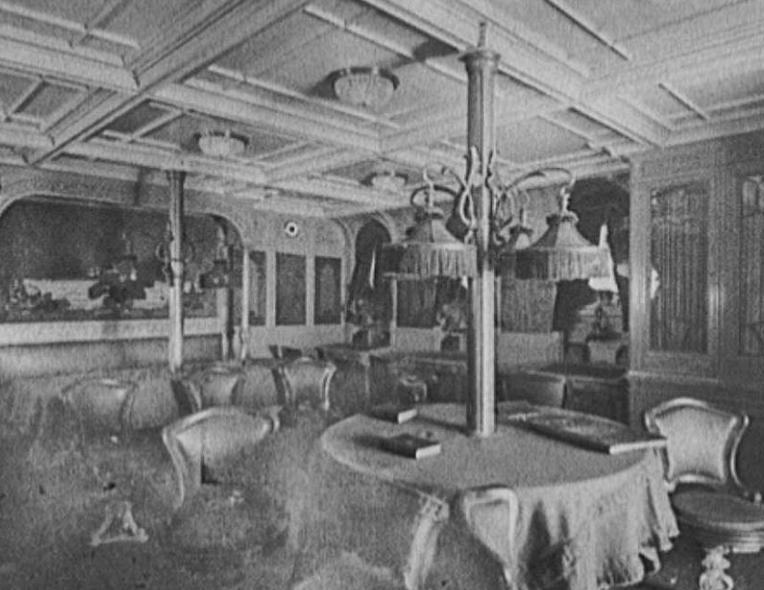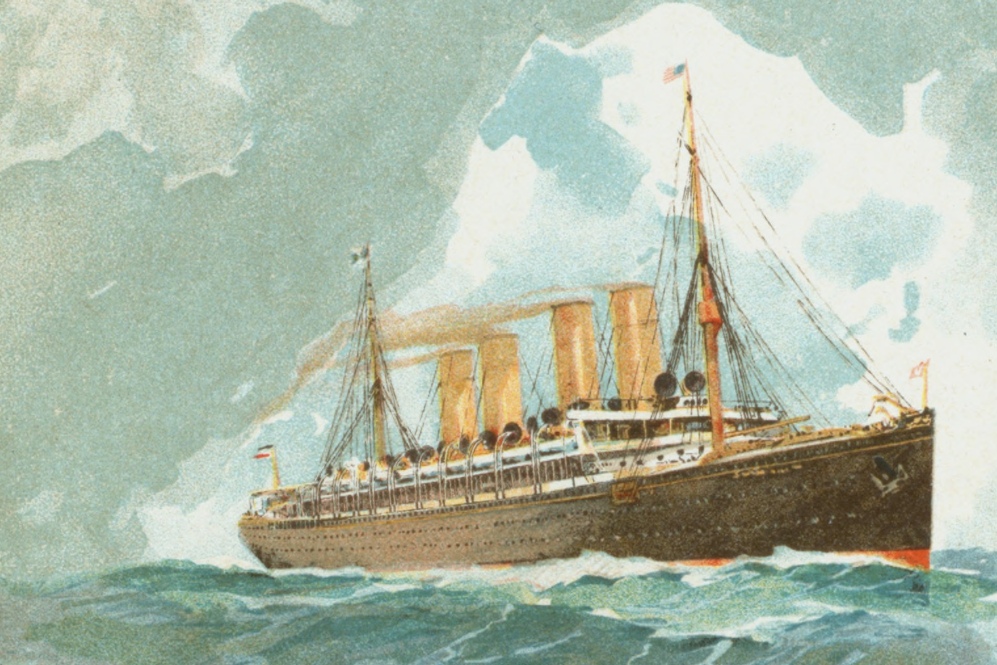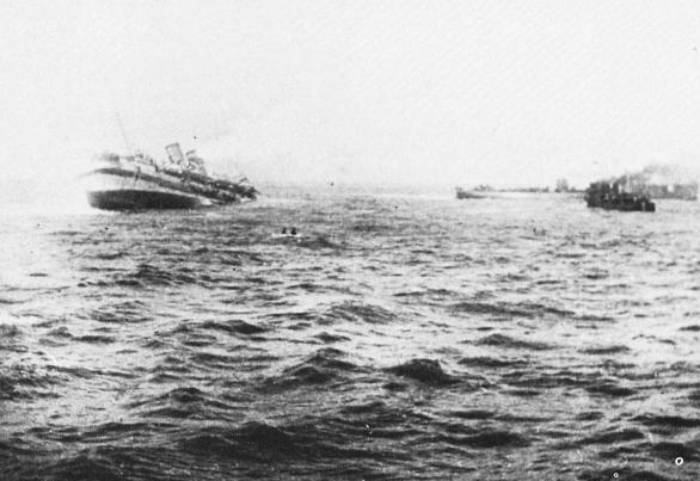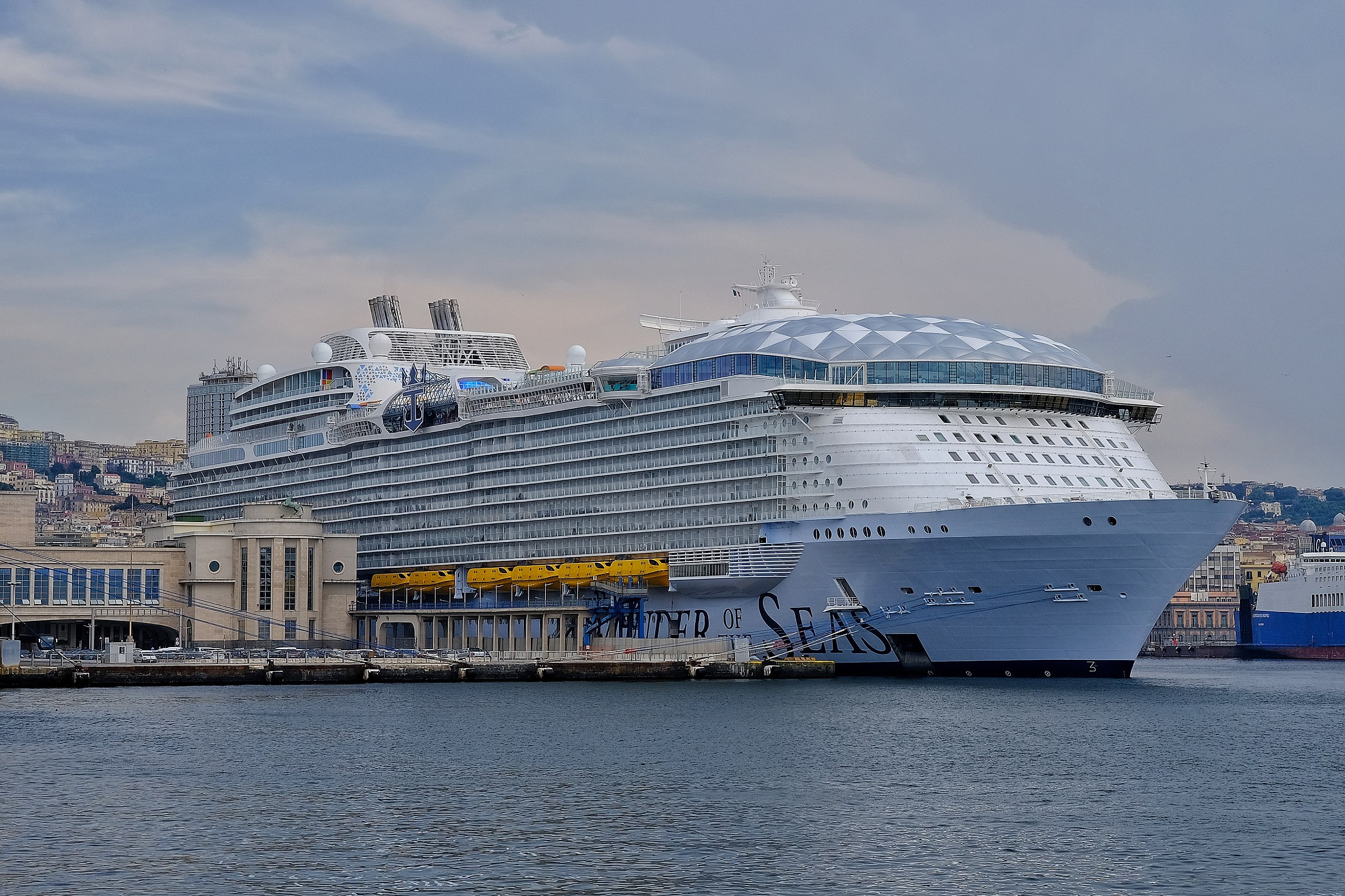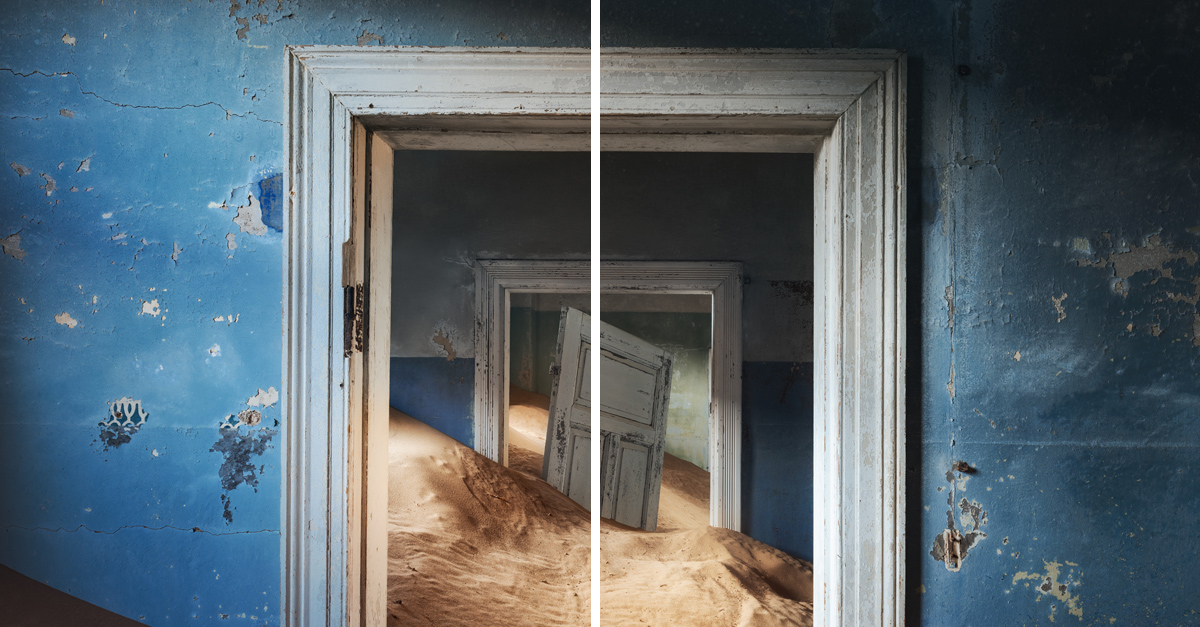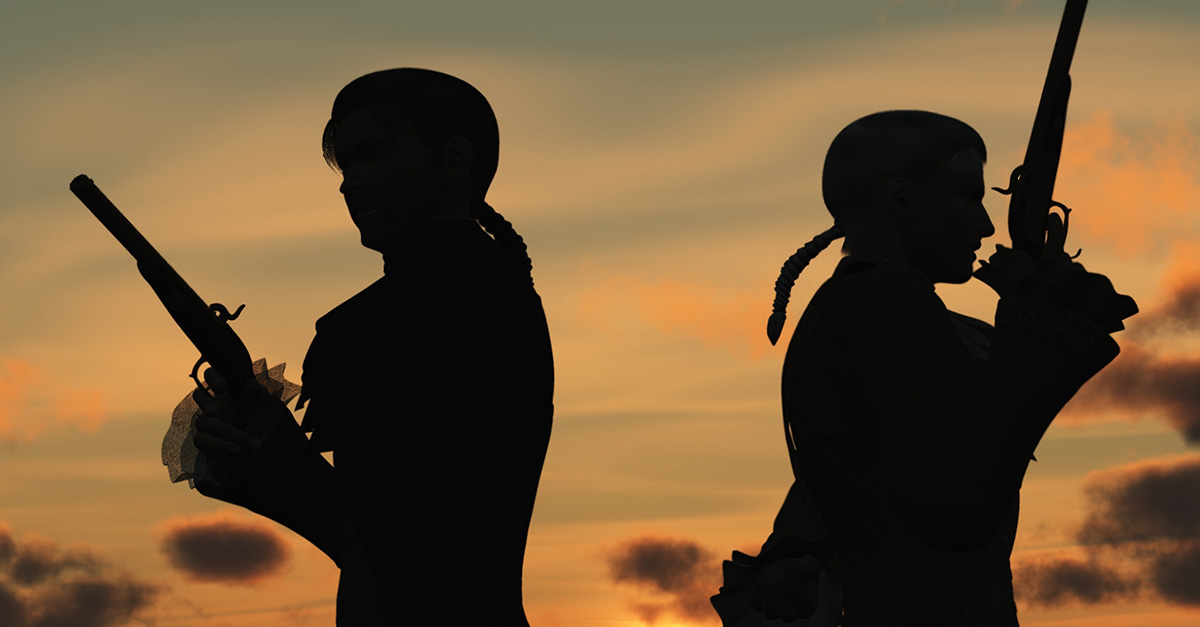The Prinzessin Victoria Luise
The Titanic. The Lusitania. The Costa Concordia. We all know about these horrifying maritime tragedies, but few remember the chilling history of the Prinzessin Victoria Luise. Not only was it the first ever cruise ship—it was also the first cruise ship disaster.
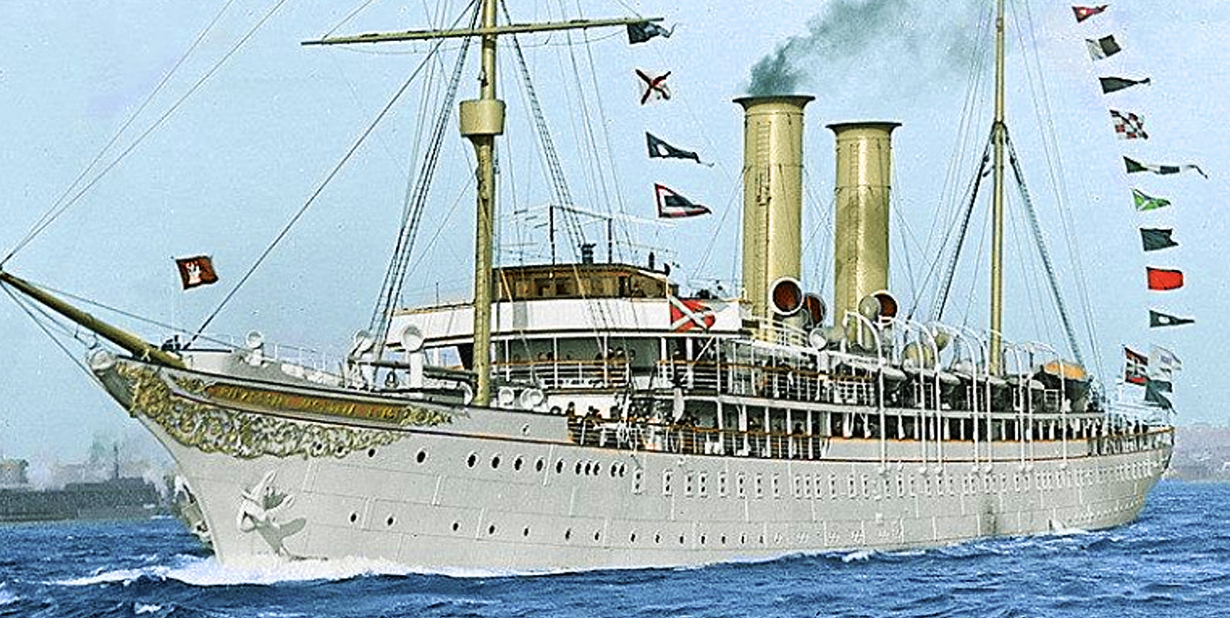
The First Cruises
Though there were passenger ships before the Prinzessin Victoria Luise, they were primarily ocean liners meant for long-distance travel between two points—not a leisure cruise for the wealthy. While some ship brokerages began to offer cruises as we know them today in the late 19th century, they quickly realized that such extravagant trips created a problem.
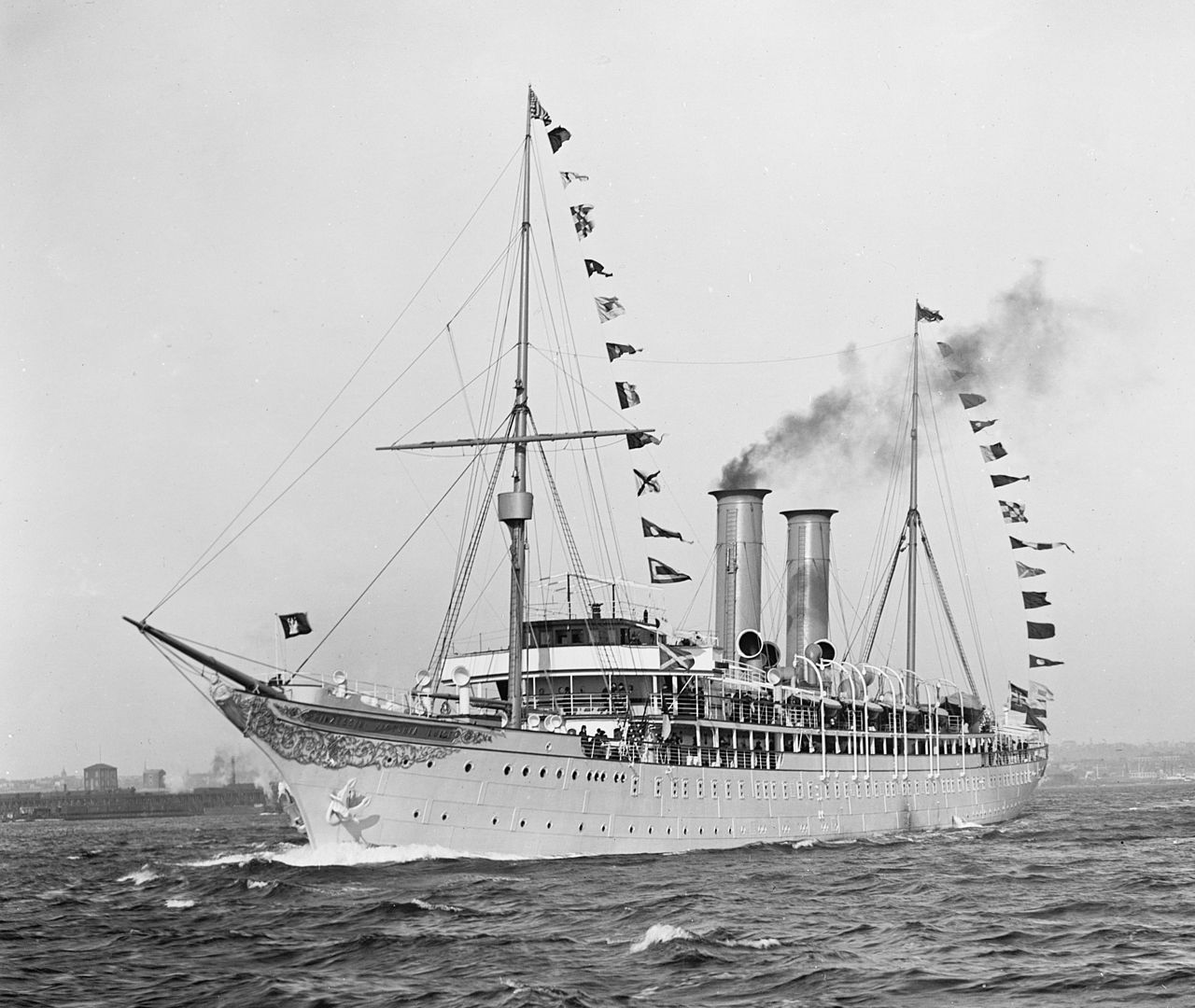 Detroit Publishing Company, Wikimedia Commons
Detroit Publishing Company, Wikimedia Commons
Around The World
As the operators of the first around-the-world cruise in 1881 discovered, cruising was an expensive business, and the ocean liners of the day weren’t necessarily appropriate for it. Operating such a large ship was costly, especially considering cruise guests wanted luxury, and ocean liners were outfitted for shipping and transporting multiple classes of passengers.
But could building a ship just for cruising be worth it?
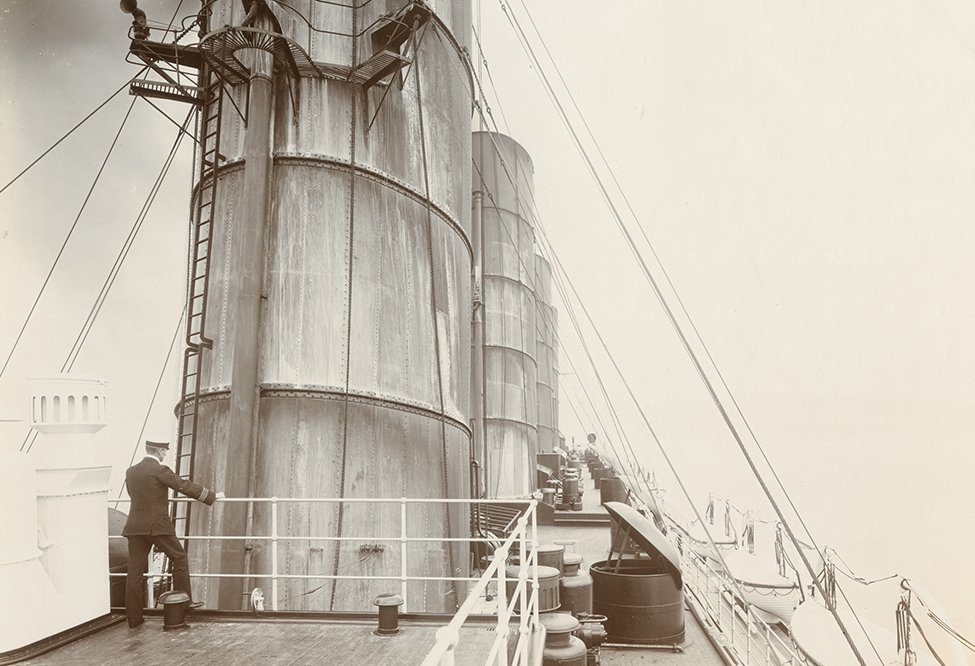 SMU Central University Libraries, Wikimedia Commons
SMU Central University Libraries, Wikimedia Commons
Moving Up In The World
Considering the proliferation of cruise ships today, it’s not a spoiler alert to say yes, it would be worth it to build a cruise ship—but the world just needed someone daring enough to take the financial risk. His name was Albert Ballin.
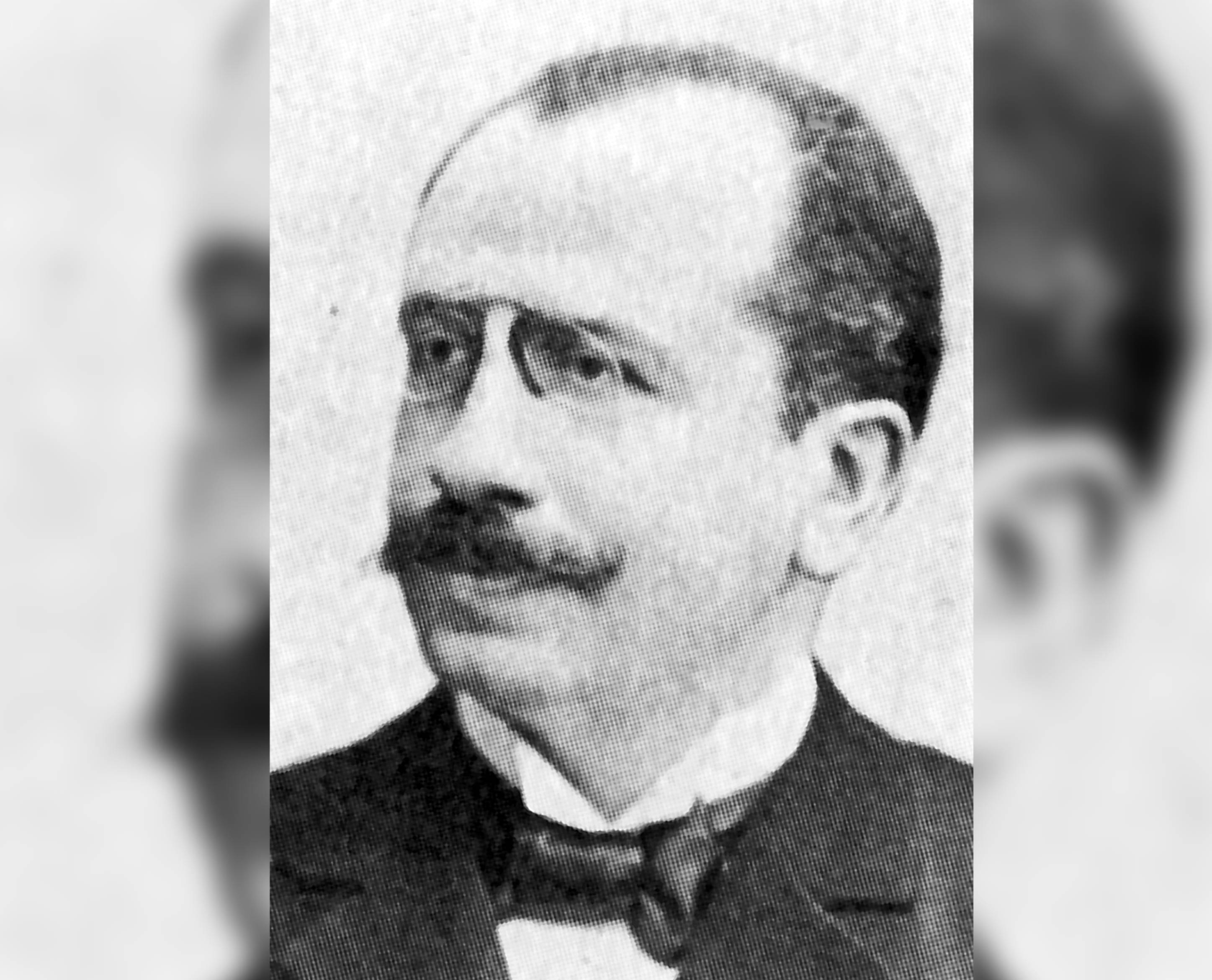 Unknown Author, Wikimedia Commons
Unknown Author, Wikimedia Commons
Albert Ballin
Ballin worked HAPAG, AKA the Hamburg America Line, a transatlantic shipping enterprise, starting there as the manager of their passenger department. When HAPAG brought a new ship into their roster, he had an idea to shake things up.
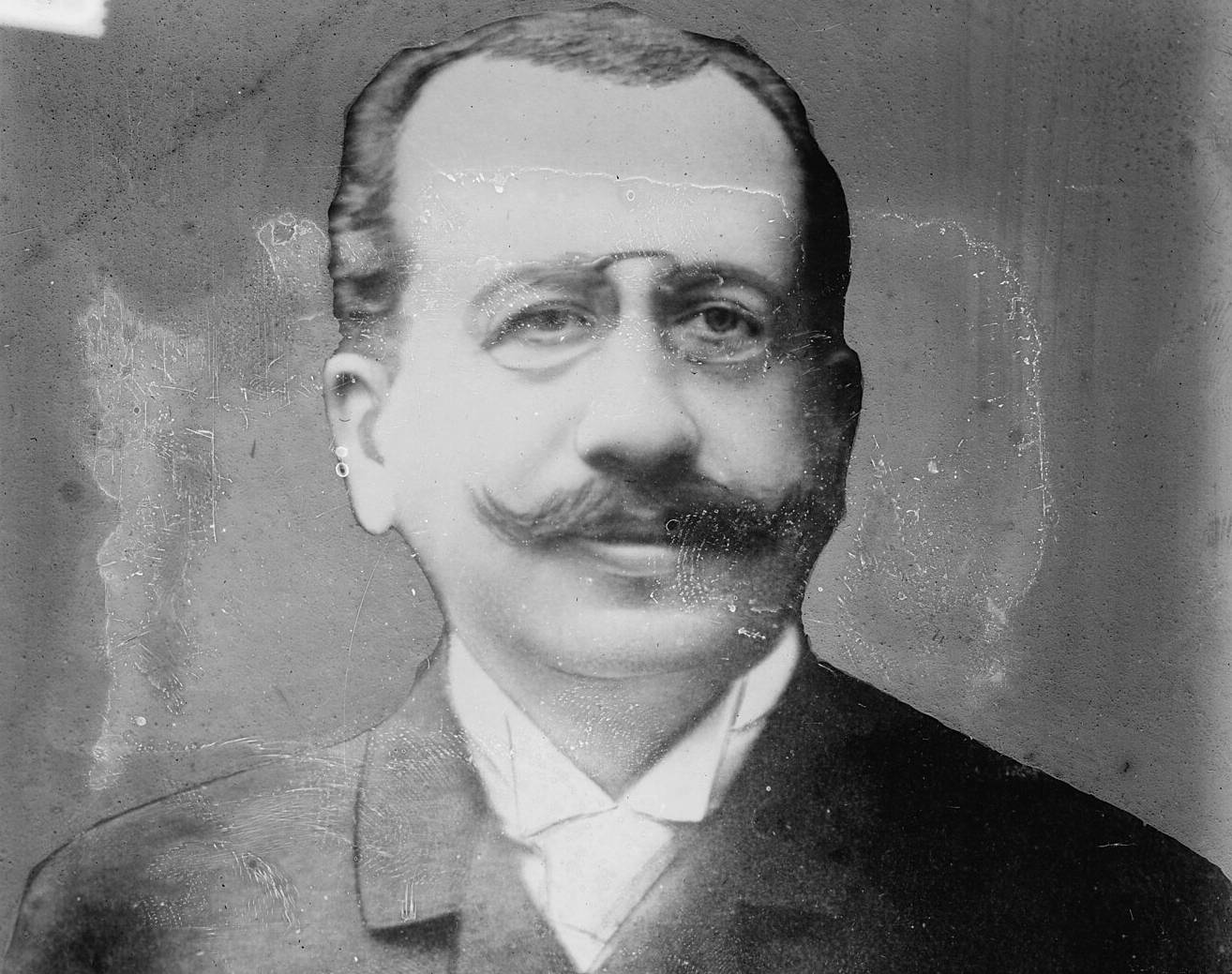 Bain News Service, Wikimedia Commons
Bain News Service, Wikimedia Commons
The Off Season
At the time, HAPAG offered transatlantic journeys for passengers, but found that there was a lull in business in the winter months, as fewer passengers wanted to travel in the cold weather. This meant that some liners sat unused for months at a time.
So, when HAPAG deployed their new flagship, the Augusta Victoria, into service, Ballin came up with an idea to make sure it never sat dormant.
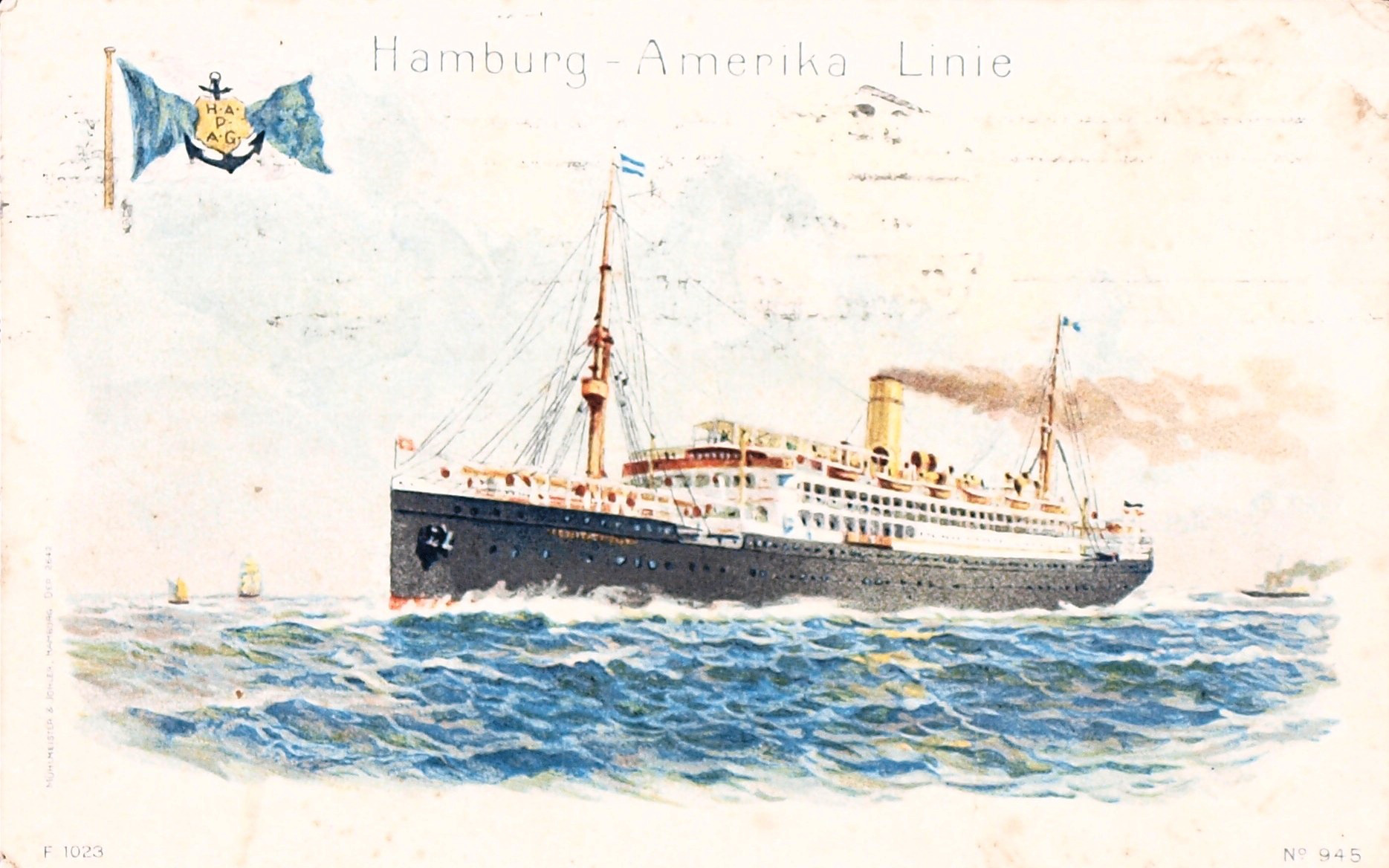 Unknown Author, Wikimedia Commons
Unknown Author, Wikimedia Commons
The Augusta Victoria
After the Augusta Victoria had two years of service under its belt, Ballin planned a 58-day excursion beginning in Cuxhaven, Germany, on the North Sea. From there, it traveled to the Mediterranean and the Near East, with stops at multiple ports. Ballin himself went on the journey, and though his colleagues at HAPAG had their reservations, he proved them all wrong.
The cruise had been a success—but Ballin had identified some fundamental problems.
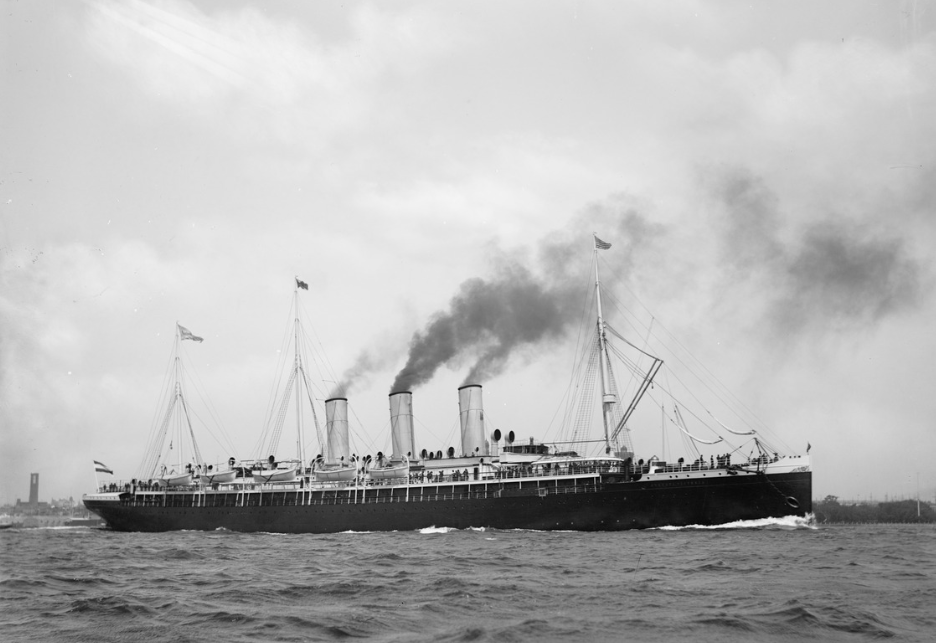 Johnston, John S., Wikimedia Commons
Johnston, John S., Wikimedia Commons
The Need For A Certain Ship
As mentioned earlier, the liners of the day were outfitted for transatlantic passage, with multiple classes and covered decks to account for cold weather on the ocean. They were also generally too large for the port cities that Ballin wanted to visit. As Ballin quickly realized, when it came to cruising, bigger wasn’t necessarily better.
The First Purpose-Built Cruise Ship
For a cruise to be successful, it had to run year-round, and have facilities specifically targeted to first class guests—the only segment with the money and time for such a leisure activity. There were no ships in HAPAG’s fleet that fit the bill—so when Ballin was promoted to managing director, he knew just what to do as his first order of business.
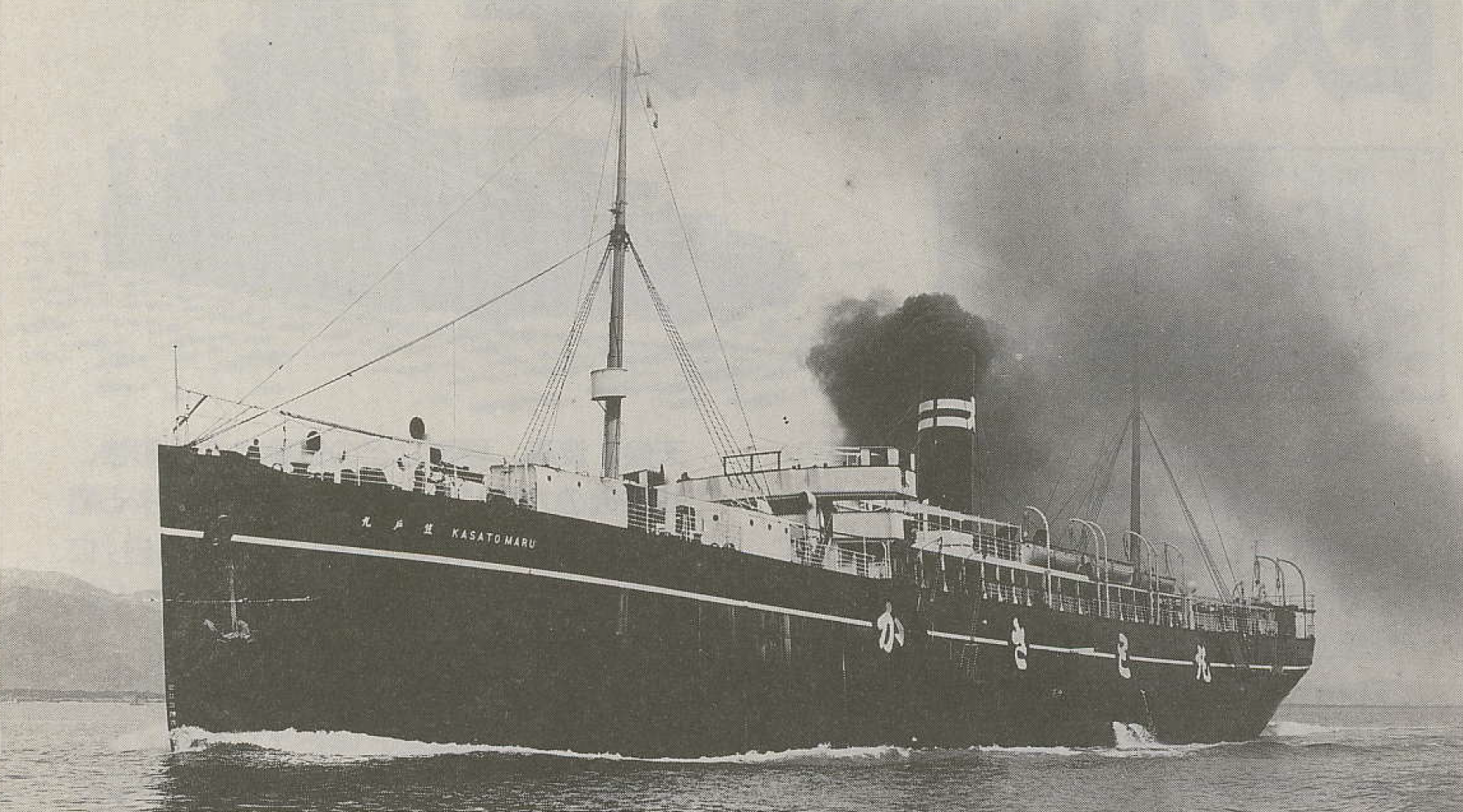 Unknown Author, Wikimedia Commons
Unknown Author, Wikimedia Commons
Blohm+Voss
Ballin contracted a Hamburg shipbuilder named Blohm+Voss to begin work on HAPAG’s—and the world’s—first purpose-built cruise ship. It was significantly smaller than the Augusta Victoria, with 4,409 gross registered tonnage, and measuring 407.5 feet to the AV’s 7,661 GRT and 475.1 feet length. But size didn’t matter, as long as it was luxurious.
The Specs
The PVL had two decks and a capacity of 200 first class passengers, as well as 161 crew. Her amenities matched the luxury steam liners of her day, with first class staterooms, a ballroom, social hall, smoking room, gymnasium, library, and art gallery.
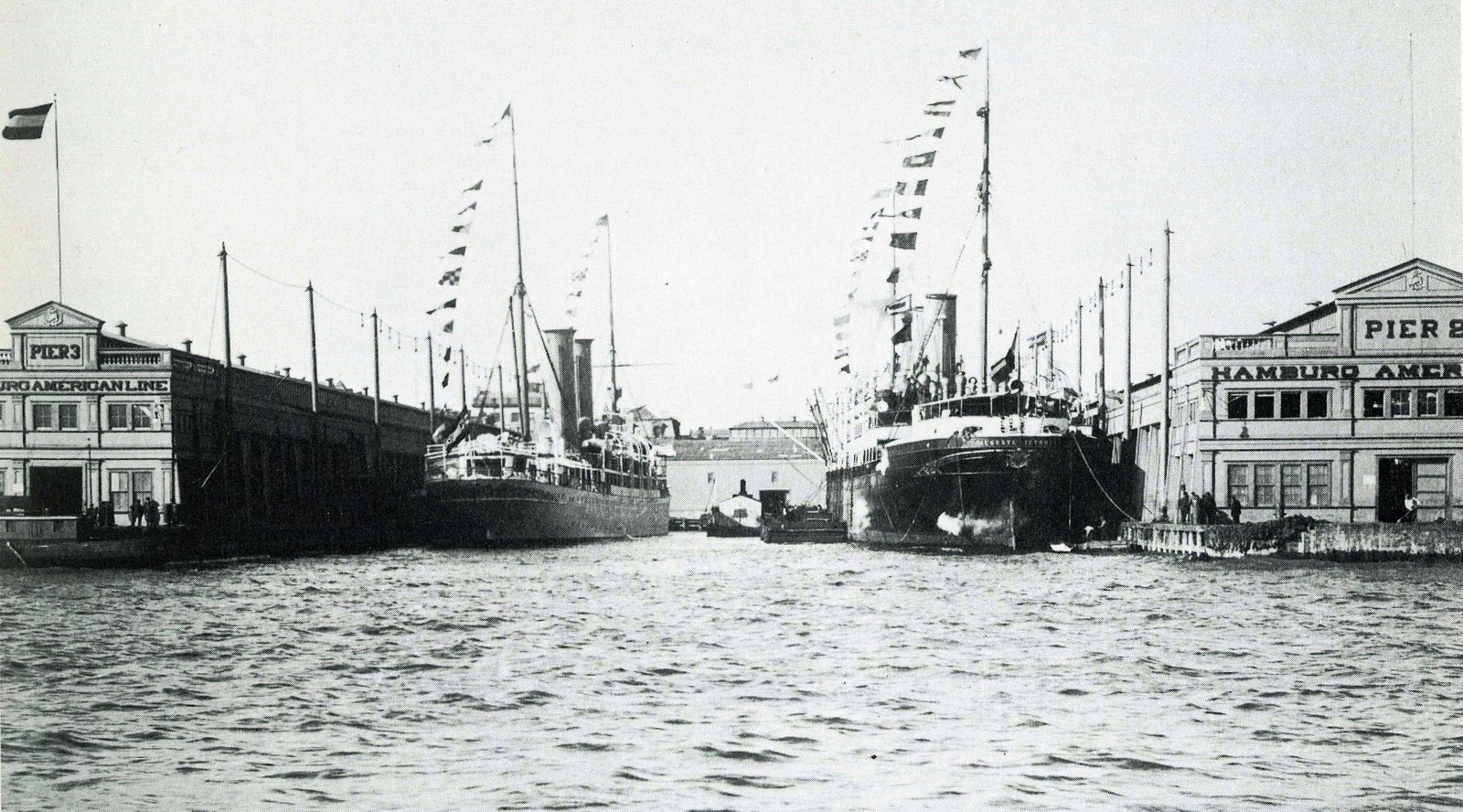 Unknown Author, Wikimedia Commons
Unknown Author, Wikimedia Commons
The Inspiration
Ballin had visited some of Europe’s finest hotels, and he had the Prinzessin Victoria Luise built in a style that would match or surpass their amenities—no steerage-class passengers or freight in sight. To add to the effect, the ship had a slimmer profile on the hull than ocean liners and was painted white like a private yacht.
And when it came to choosing a name for the ship, Ballin and HAPAG chose an appropriately regal example.
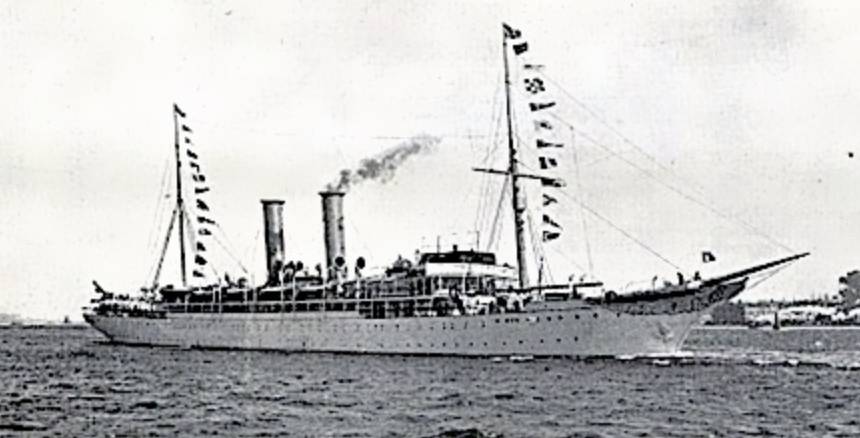 Scientific American, Wikimedia Commons
Scientific American, Wikimedia Commons
The Namesake
The Prinzessin Victoria Luise was named for Princess Victoria Louise of Prussia, the only daughter of Kaiser Wilhelm II, who at the time was only seven or eight years old. The intelligent, strong-willed child was noted to be a favorite of the Kaiser—but unfortunately, the ship named after her was not.
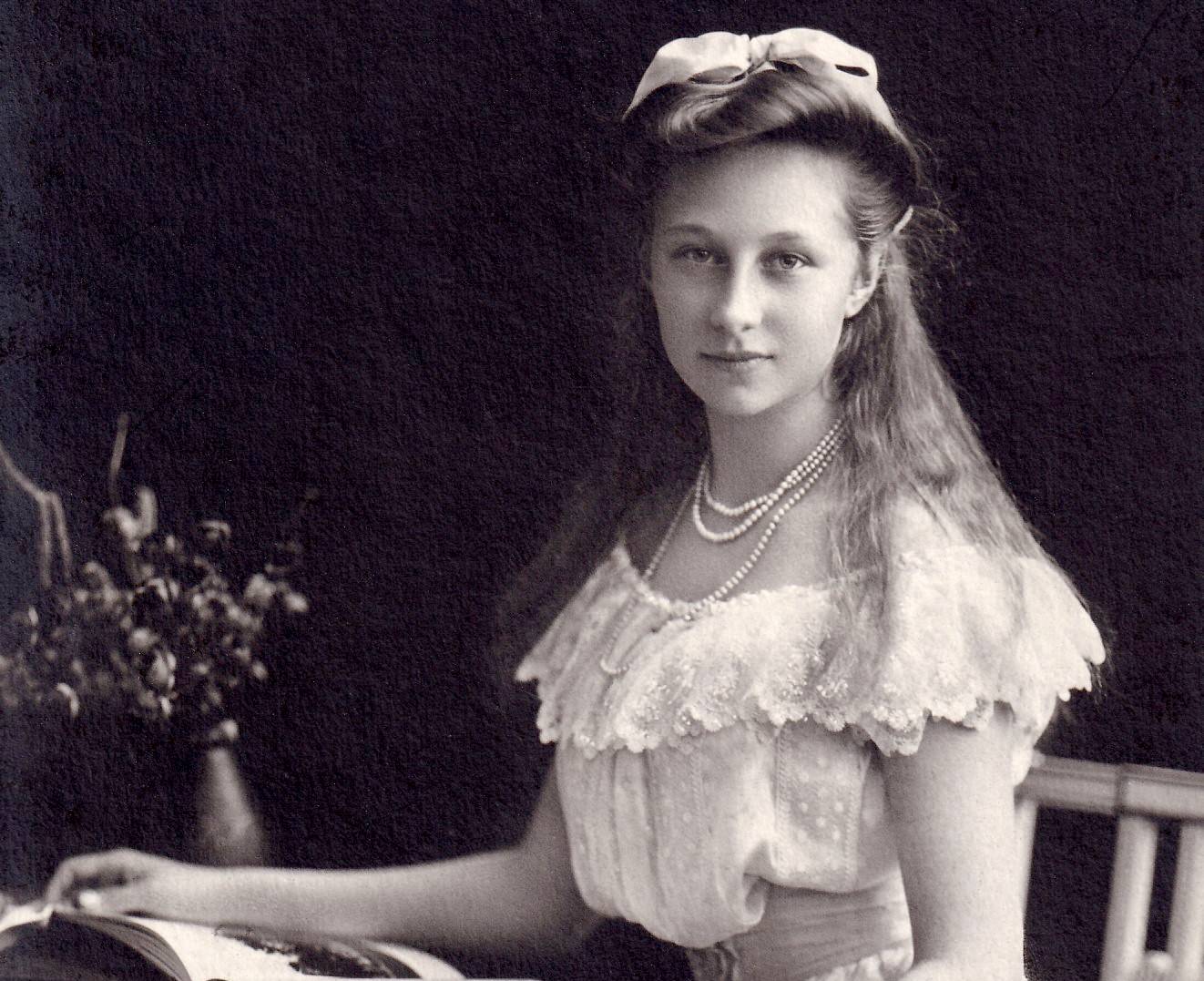 Erich Sellin, Wikimedia Commons
Erich Sellin, Wikimedia Commons
The Kaiser
Sure, there were bigger boats than the Prinzessin Victoria Luise, but few were as luxurious, even those that were privately-owned. That was what bugged Kaiser Wilhelm II. When he first laid eyes on the Prinzessin Victoria Luise, he jealously remarked that it was larger than his imperial yacht, Hohenzollern.
The ship was certainly impressive—and its first voyage would truly be something to behold. That is, if they could pull it off.
The Best Laid Plans
The original plan for the Prinzessin Victoria Luise was to be an extraordinary undertaking—a 135-day journey beginning in Hamburg, heading to San Francisco around the southern tip of South America, and then coming back. But you know what they say about the best laid plans…
 Unknown Author, Wikimedia Commons
Unknown Author, Wikimedia Commons
The Cancelled Voyage
This original maiden voyage was scheduled to begin in August of 1900, but it never came to be. Something at the shipyard—potentially a strike—slowed down the completion of the Prinzessin Victoria Luise, and she was only finished in December of that year. HAPAG had to come up with a Plan B for the maiden voyage—and they had just weeks to pull it off.
The Maiden Voyage
What better way to ring in the new year than by setting off on a maiden voyage? The Prinzessin Victoria Luise’s second attempt at an inaugural journey began on January 5, 1901, when it left Hamburg for the first time, making stops at Boulogne, France, and Plymouth, England, all before making its way to glamorous…Hoboken, New Jersey.
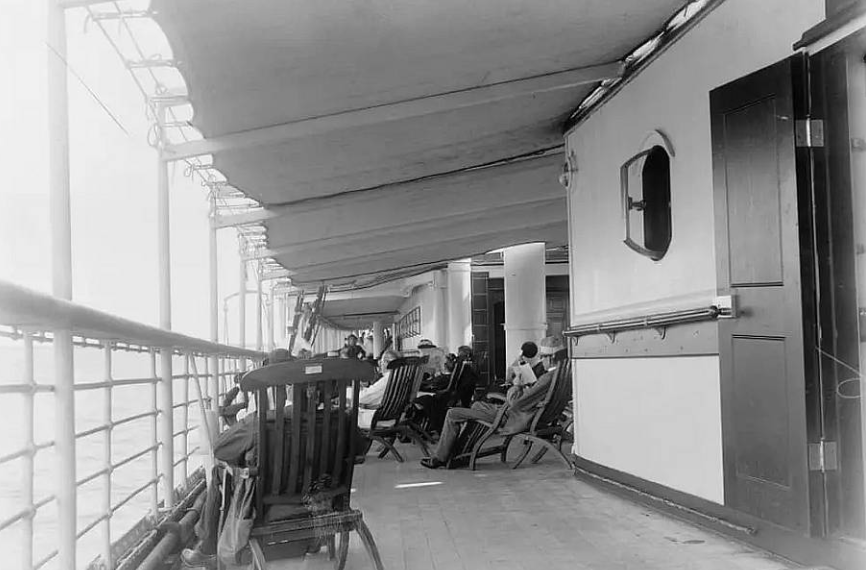 Unknown Author, Wikimedia Commons
Unknown Author, Wikimedia Commons
A New Home
Due to its position on the Hudson River across from New York City, Hoboken was actually a popular port for passengers arriving from Europe in the late 18th and early 19th century. Prior to WWI, its waterfront was dominated by cruise ship piers—and thanks to its proximity to the warm and inviting waters running down the East Coast to the Caribbean, it made the perfect home for the Prinzessin Victoria Luise.
The First Cruise
The very first cruise planned for the Prinzessin Victoria Luise was a 35-day journey around the West Indies with stops in to Port-au-Prince; Santo Domingo; San Juan; St Thomas, in what were then the Danish West Indies; Saint-Pierre; Port of Spain; La Guaira: Puerto Cabello; Curaçao; Kingston; Santiago de Cuba; Cienfuegos; and Havana.
The Prinzessin Victoria Luise wasn’t just giving its passengers a luxury ride—it was giving them luxury destinations too.
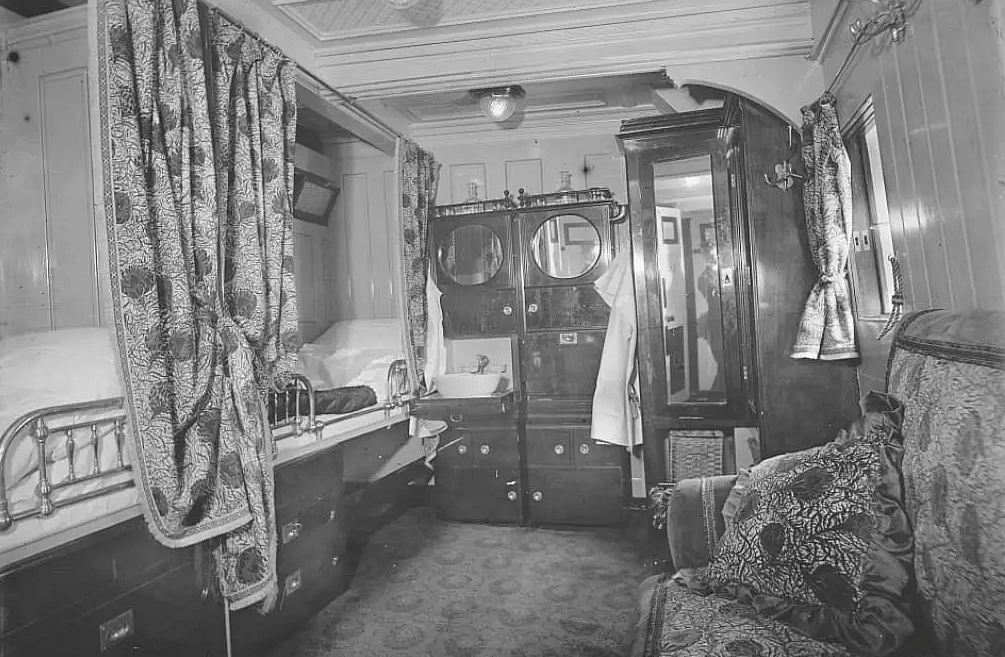 Unknown Author, Wikimedia Commons
Unknown Author, Wikimedia Commons
Setting The Standard
What really set the Prinzessin Victoria Luise apart from the liners of the day wasn’t just its looks and its facilities. On the very first voyage, it was clear that it offered passengers an unparalleled experience. For example, the passenger-to-crew ratio, at 180 to 161, meant that the service was truly top notch.
The Menu
A sample menu from the first voyage shows that the luxury experience also extended to the dining room, where guests were given the option of a variety of delicacies. Guests could choose between dishes like soupe a la reine, roast turkey, and green turtle ragout.
No expense was spared—which was reflected in the prices to come on board.
The Tickets
Prinzessin Victoria Luise was first class all the way, with the ticket prices to match. For a two week or month-long journey, prices ranged from $75 to $175 and up. In today’s prices, that’s $2,315 to $5,403. At the time, the yearly salary in the US averaged just under $450—meaning that only affluent passengers could afford a ride on the Prinzessin Victoria Luise.
 Unknown Author, Wikimedia Commons
Unknown Author, Wikimedia Commons
Success
After its first 35-day cruise, the Prinzessin Victoria Luise returned to Hoboken on March 2, 1901. Just seven days later, it set sail with a new set of passengers for its second cruise, to the Mediterranean and Black Seas. Soon after, she returned to her native Germany, where she was celebrated as the success story she was.
Albert Ballin’s Moment In The Spotlight
The Prinzessin Victoria Luise visited a regatta in Germany, where Kaiser Wilhelm II celebrated Albert Ballin, the man behind the ship’s success, calling him “the farseeing and tireless pathbreaker for our German commerce and export". It was an incredible moment for Ballin, HAPAG, and the Prinzessin Victoria Luise.
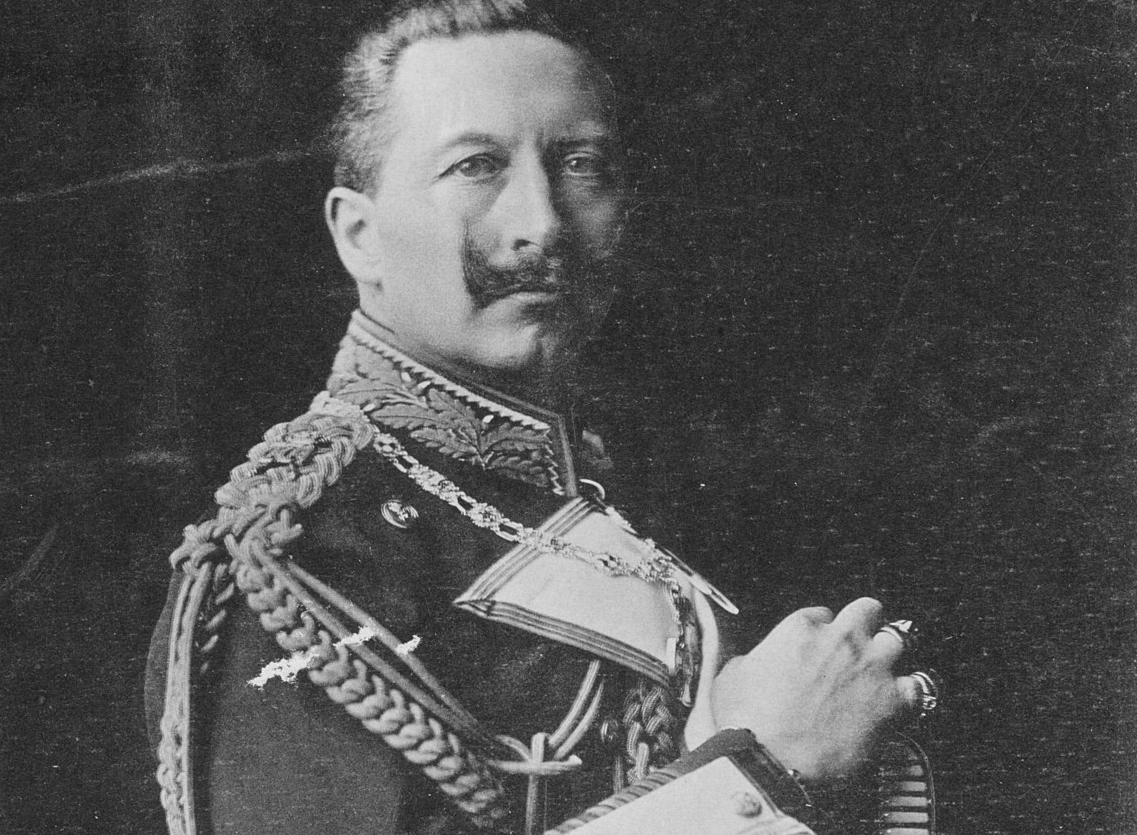 Unknown Author, Wikimedia Commons
Unknown Author, Wikimedia Commons
Year Two
Over the next year, the Prinzessin Victoria Luise saw continued success and embarked on incredible journeys around the world, helping celebrate Prince Henry of Prussia’s visit to the USA, and planning a special cruise to Le Havre, Hamburg, and London in honor of King Edward VII and Queen Alexandra’s 1902 coronation.
To get near to such a monumental event aboard such a luxurious ship was like a dream—but even after the coronation was postponed, people still clamored to climb on board the Prinzessin Victoria Luise.
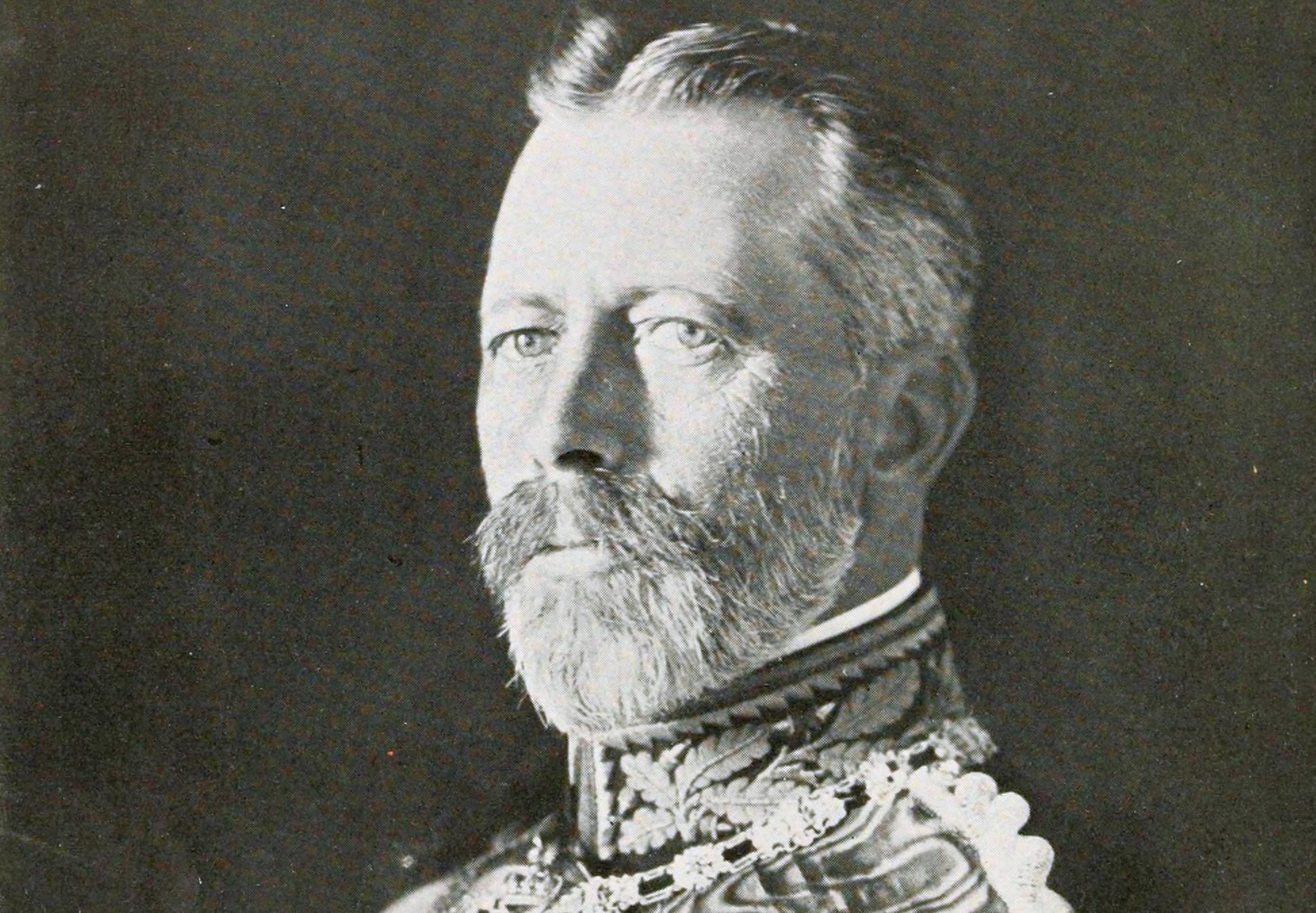 Henderson, Ernest F. (Ernest Flagg), Wikimedia Commons
Henderson, Ernest F. (Ernest Flagg), Wikimedia Commons
Year Three
By now, the Prinzessin Victoria Luise had truly hit its stride, with voyages from Hoboken to the Caribbean planned for the winter and from Hamburg to stops in the Arctic and Baltic Oceans planned for the summer. But then HAPAG decided to take things up a notch.
If At First You Don’t Succeed
HAPAG hadn’t been able to follow through on their impressive plans for the Prinzessin Victoria Luise’s original maiden voyage, but in September of 1903 they made an announcement that upstaged anything the ship had done before.
Around The World In 135 Days
For her fourth year in operation, HAPAG broke the news that the Prinzessin Victoria Luise would offer a four-and-a-half month journey which would nearly go around the world. It was planned from September 13, 1904, to January 26, 1905—truly, a journey fit for a prince.
But as they began to get more into planning, they had to make some alterations.
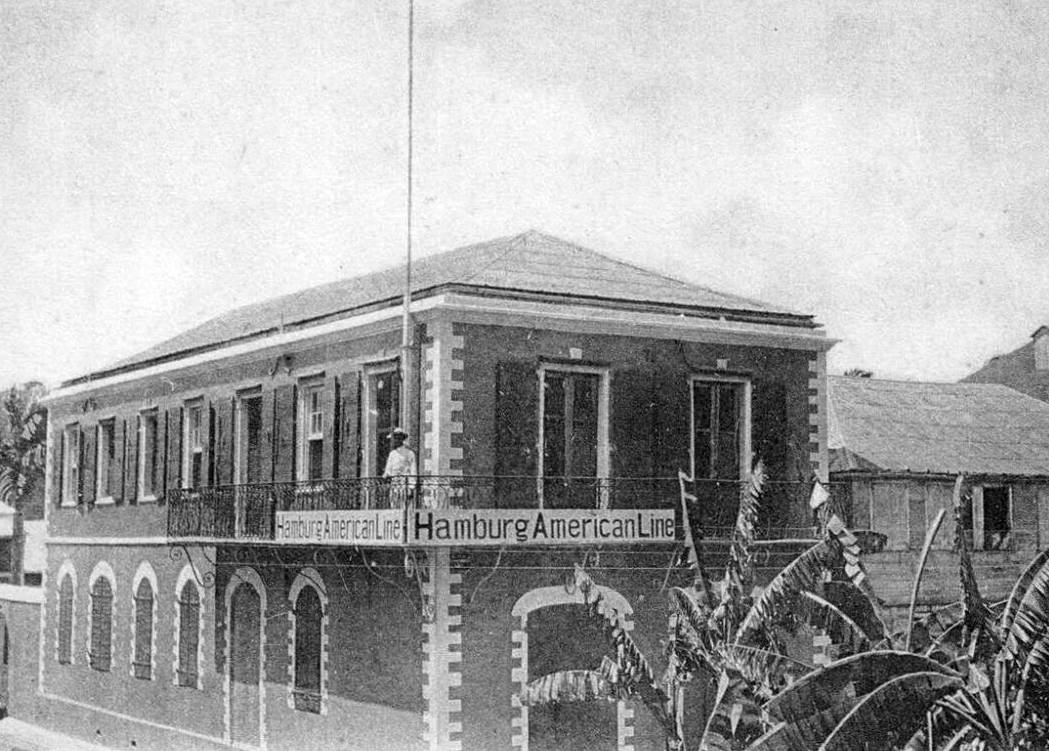 John N. Lightbourn, Wikimedia Commons
John N. Lightbourn, Wikimedia Commons
A Massive Undertaking
After a few revisions, it was determined that the Prinzessin Victoria Luise would leave Hamburg on September 25 and visit ports of call throughout Europe before taking the Suez Canal, going past India—though guests had the option to travel over land—and on to Asia, then to San Francisco, where passengers would have the option to travel back home.
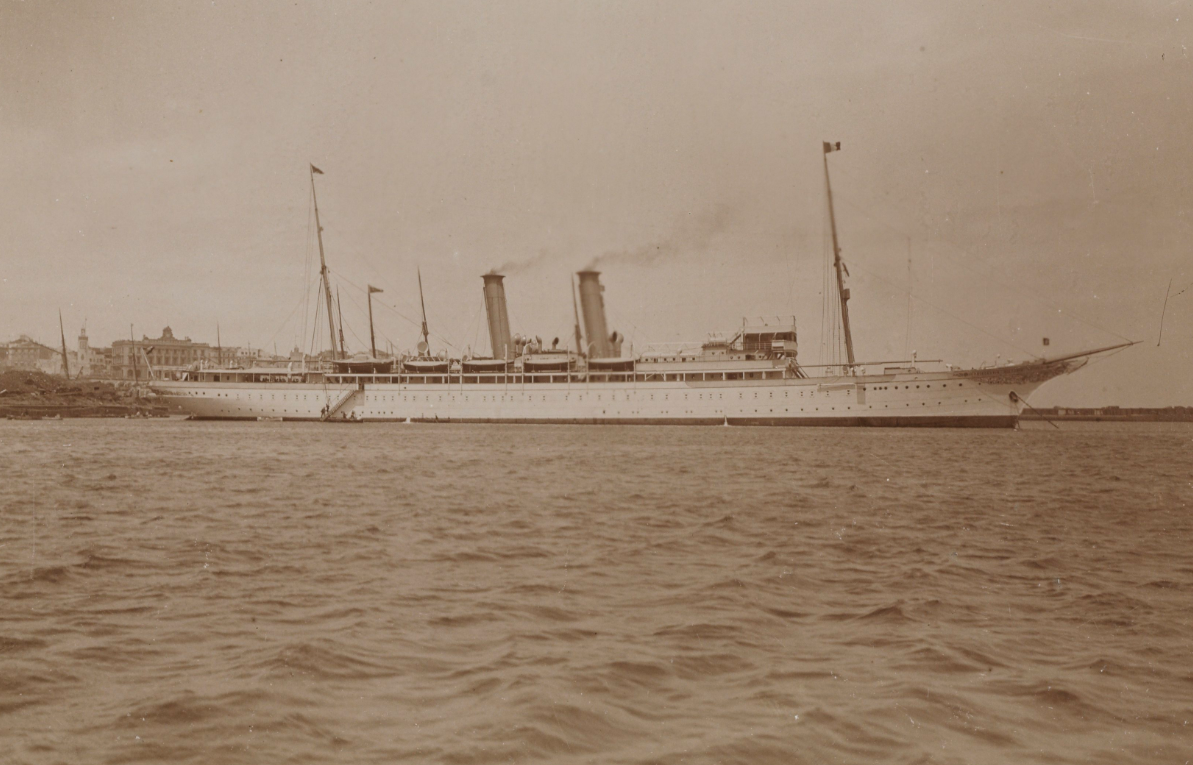 National Library of Poland, Wikimedia Commons
National Library of Poland, Wikimedia Commons
For Your Pleasure
To accommodate the 200 first class passengers who’d be welcomed on board, the Prinzessin Victoria Luise offered a new amenity—though one that would become standard for cruise ships: Musicians. As the New York Times said of the voyage, “The Prinzessin Victoria Luise is run strictly and exclusively as the highest type of pleasure craft”.
Life Aboard The Prinzessin Victoria Luise
Though the Prinzessin Victoria Luise was all first class, it didn’t mean that all first class staterooms were built alike. One notable exception was the Emperor’s Suite, which boasted its own private bath and toilet. See, as luxurious as it was, the ship was still bound to the limitations of the technology of the day.
The Prinzessin Victoria Luise’s Waterworks
Though first class cabins were sumptuously decorated in rich woods and fabrics, they were missing one crucial component: bathrooms. Though they had sinks, they had to arrange a time for bathing with a crew member.
Other Amenities
There were other technological advancements aboard the Prinzessin Victoria Luise—namely, electric lights and a paging system for stewards. The boat’s interiors were built and decorated in the Art Nouveau style, and had the live plants and flowers to match. One other thing set it apart: an onboard darkroom for amateur photographers, likely the first of its kind aboard a ship.
Finding A Niche
As HAPAG expanded its fleet, they decided that it was time for the Prinzessin Victoria Luise to stick to one of the more popular cruise routes, sailing from Hoboken to Jamaica. At the time they made this decision, in June of 1906, the ship’s captain, Captain H Brunswig, had been at its helm for a few years.
Though it didn’t quite have the glitz and glamor of an around-the-world cruise, at least its route would be predictable…or so they thought.
Captain Brunswig
Captain Brunswig was at the helm on December 12, 1906, as the Prinzessin Victoria Luise sailed from Hoboken to Jamaica, where it was due in Kingston. However, on the evening of December 16, 1906, Brunswig made a fatal mistake.
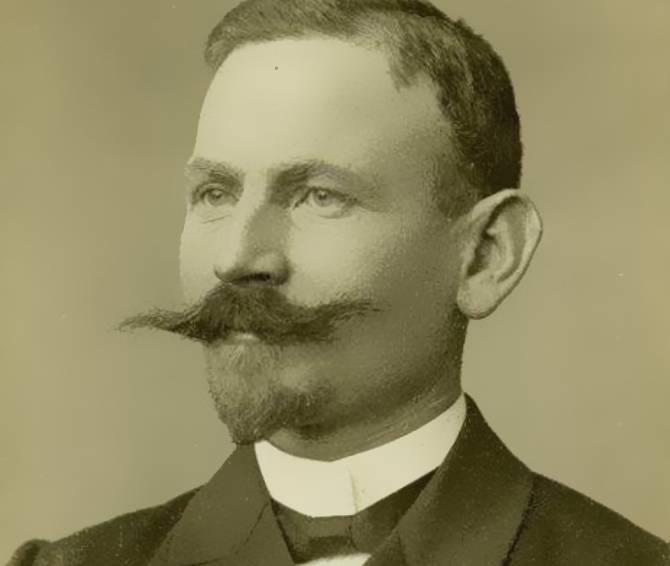 J Hamann of Hamburg, Wikimedia Commons
J Hamann of Hamburg, Wikimedia Commons
Sailing Through The Darkness
As the Prinzessin Victoria Luise approached Kingston, Captain Brunswig realized he couldn’t see well enough to get into the harbor, so he turned on the ship’s night signals in hope someone would see them and help. After getting no response, Brunwig planned to turn around and anchor at Port Royal instead—but that’s not exactly how it happened.
The Lighthouse Mistake
When Captain Brunswig spotted a lighthouse, he thought he’d made it to Port Royal—but he was wrong. He’d found the Plumb Point lighthouse instead, and he was sailing directly at it. To add insult to injury, a recent volcanic eruption had affected water levels in the area, and the nautical charts hadn’t been updated to reflect this.
That’s when Captain Brunswig heard a sound that would change everything.
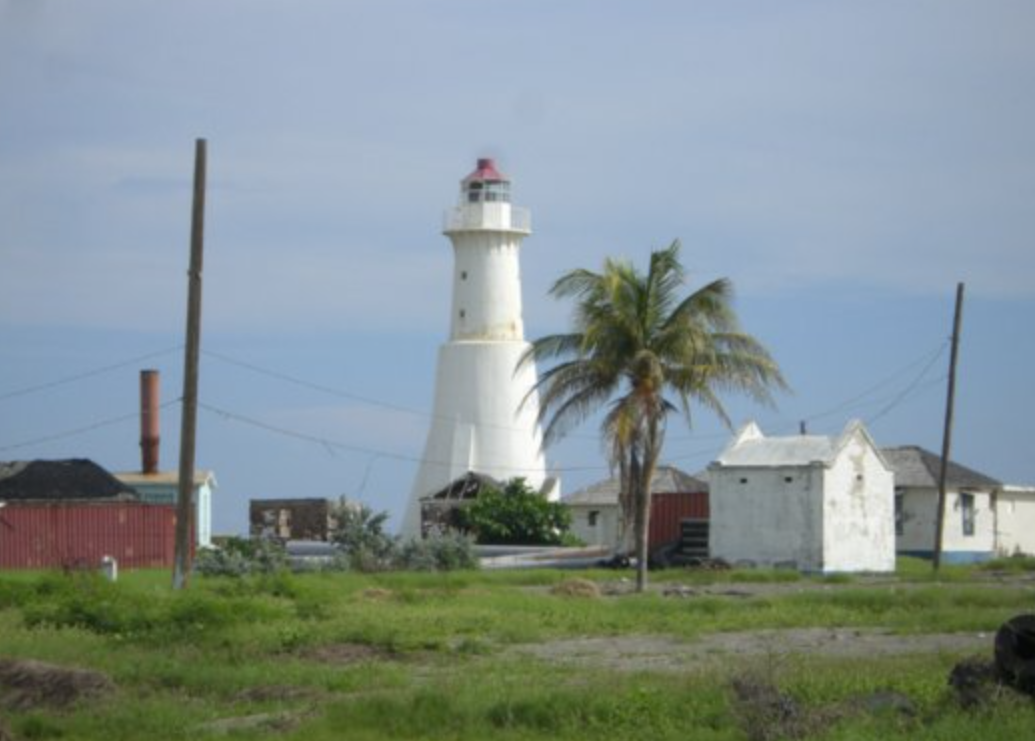 Chris Davis, CC BY-SA 3.0, Wikimedia Commons
Chris Davis, CC BY-SA 3.0, Wikimedia Commons
Land Ho
Thanks to Brunswig’s mistake, the Prinzessin Victoria Luise had run aground on a reef. He tried to run the ship’s engines in order to dislodge her, but quickly realized it was no use. The world’s first cruise ship was stuck—and likely done for.
 Unknown Author, Wikimedia Commons
Unknown Author, Wikimedia Commons
A Message To Shore
Captain Brunswig sent a boat to report the incident to shore, as passengers wondered what had happened and waited for instructions from the crew. They stayed on board that dark night, waiting for the light of day to break and for a rescue effort to save them from the beached ship.
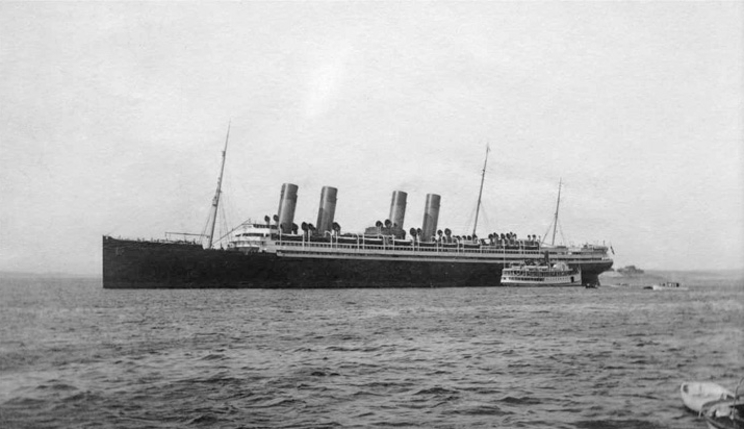 Unknown Author, Wikimedia Commons
Unknown Author, Wikimedia Commons
The Chain Effect
The next morning, 16 members of the crew went to Plumb Point for help, where they gathered together enough boats to make a line stretching from the Prinzessin Victoria Luise to shore. Passengers exited the ship, climbing into the closest boat and being helped from boat to another until they were safe on shore.
They knew something had gone wrong—but they didn’t know how bad it was.
 Unknown Author, Wikimedia Commons
Unknown Author, Wikimedia Commons
The Captain’s Cabin
Though the damage to the ship was undeniable, all of the Prinzessin Victoria Luise’s passengers were unscathed—but the shame of the error was too great for Captain Brunswig. That night, within hours of the crash, after alerting the authorities on shore, he locked himself in his cabin and took his own life.
The passengers didn’t find out until well after they were rescued.
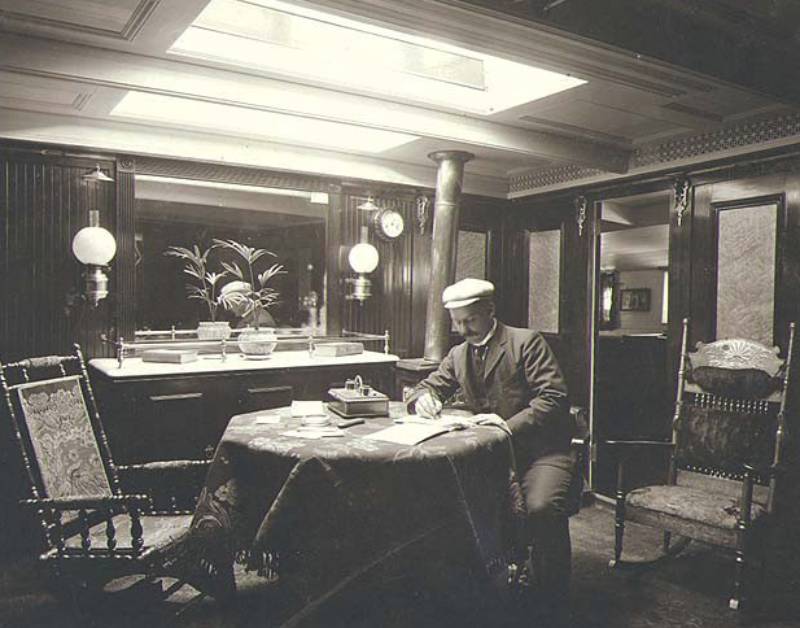 Wilhelm Hester Photographs Collection, Picryl
Wilhelm Hester Photographs Collection, Picryl
The Aftermath
In the wake of the ship’s grounding, HAPAG representatives and others who knew Captain Brunswig struggled with what had happened, with one source calling him “one of the best known and most reliable commanders in the company’s service”.
Though it had clearly been a mistake on his part, it was hard for his crew to grapple with the punishment he’d chosen for himself.
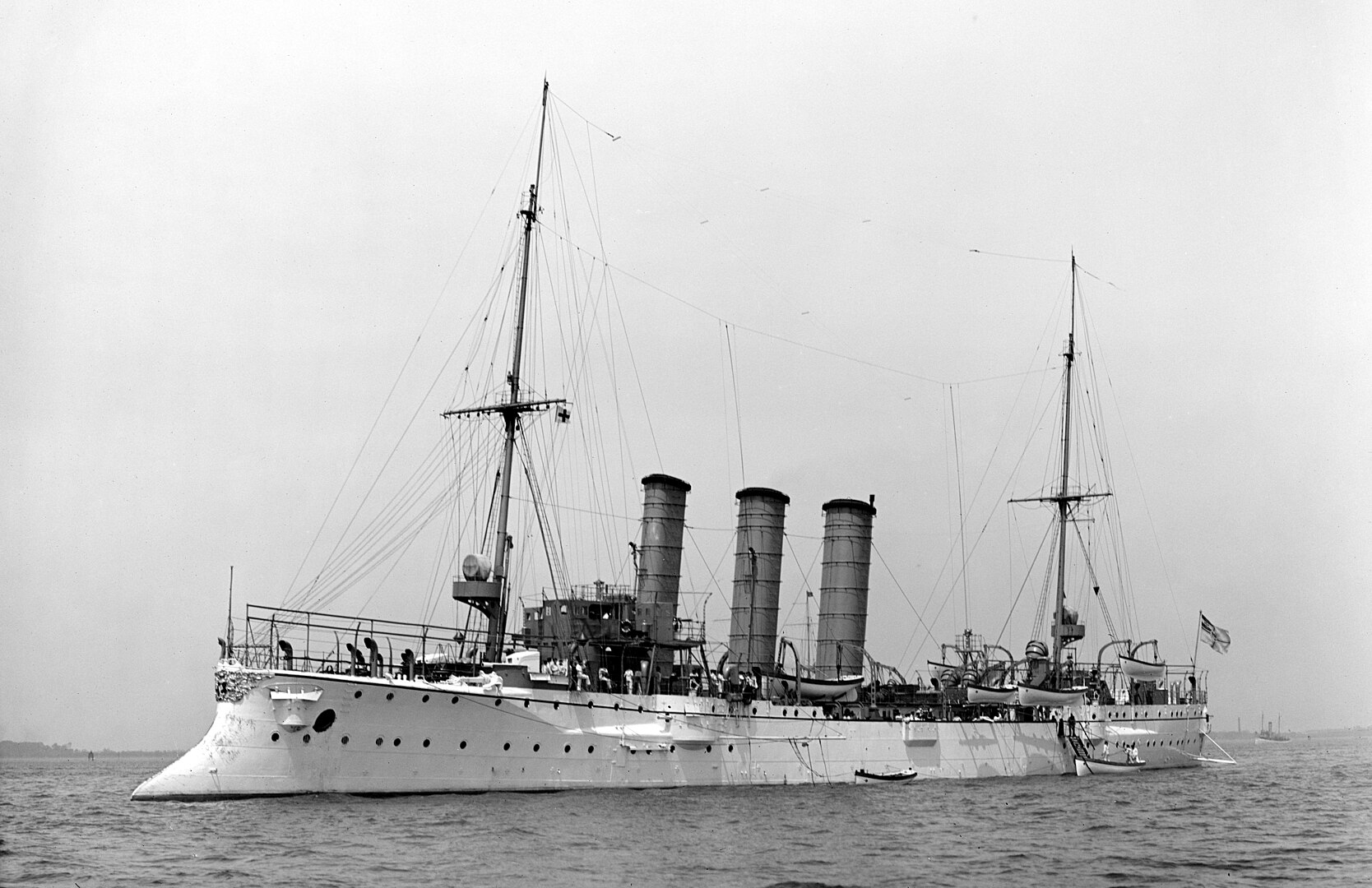 Unknown Author, Wikimedia Commons
Unknown Author, Wikimedia Commons
The Captain’s Duty
It had been Captain Brunswig’s duty to stay with the ship, help with the rescue of passengers and crew, and do his best to save the craft—but he’d been in dereliction of all these responsibilities. Beyond that, he was also expected to testify at any proceedings relating to the wreck.
Though he didn’t live to pay for it, a maritime court would eventually take a closer look at what had really happened. But in the meantime, the remaining crew tried to save their ship.
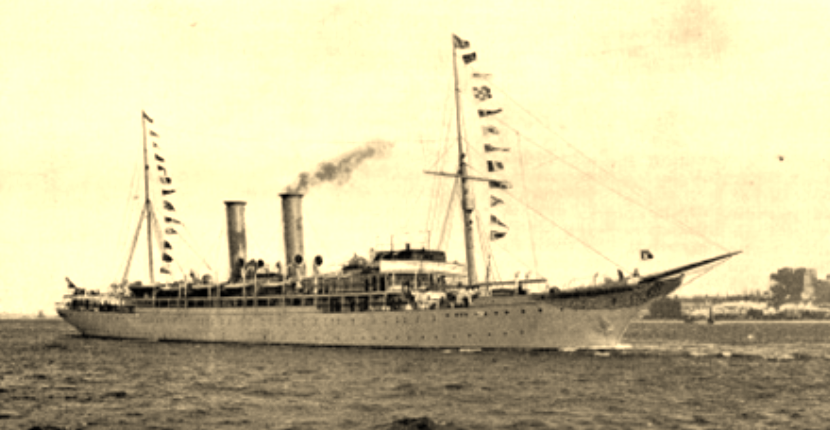 Scientific American, Wikimedia Commons
Scientific American, Wikimedia Commons
Salvage Efforts
Immediately following the grounding, two nearby ships, one German and one French, came to the Prinzessin Victoria Luise’s aid, hoping to be able to rescue the storied ship—but their efforts were for nought. Next, a salvage tug, more properly suited for the job, joined the effort. However, Mother Nature had a say in it all.
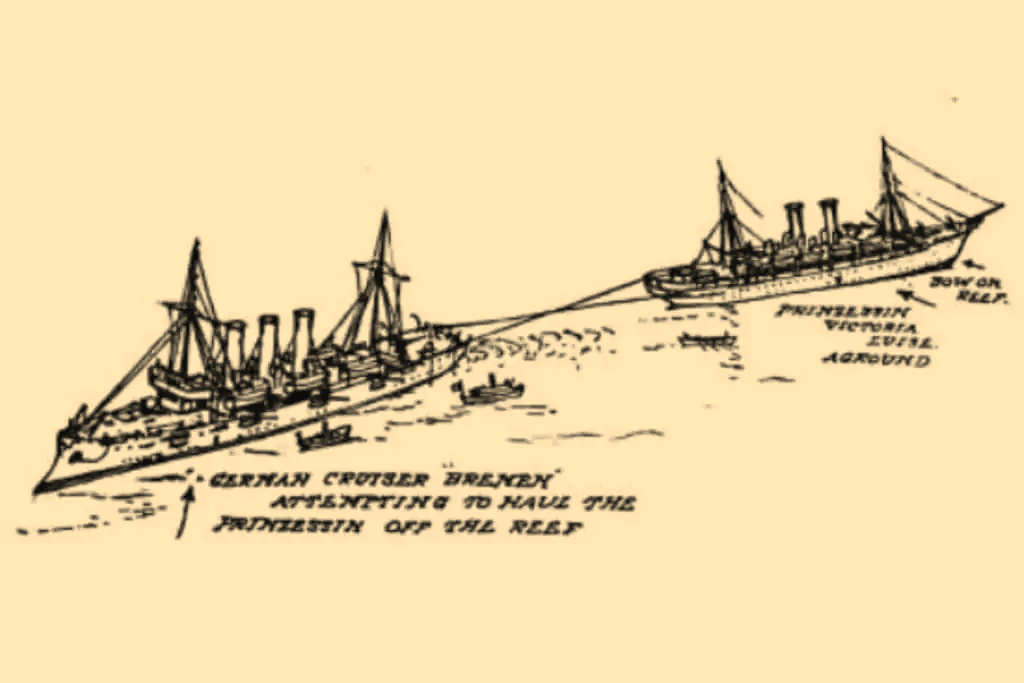 Unknown Author, Wikimedia Commons
Unknown Author, Wikimedia Commons
A Watery Grave
Storms and waves had their way with the grounded cruise ship, causing her to list to one side and take on a massive amount of water. As the days went on and the scene got worse, it became clear that the Prinzessin Victoria Luise would not be saved. On December 19, HAPAG announced that it was a total loss. And the tragedy didn’t stop there.
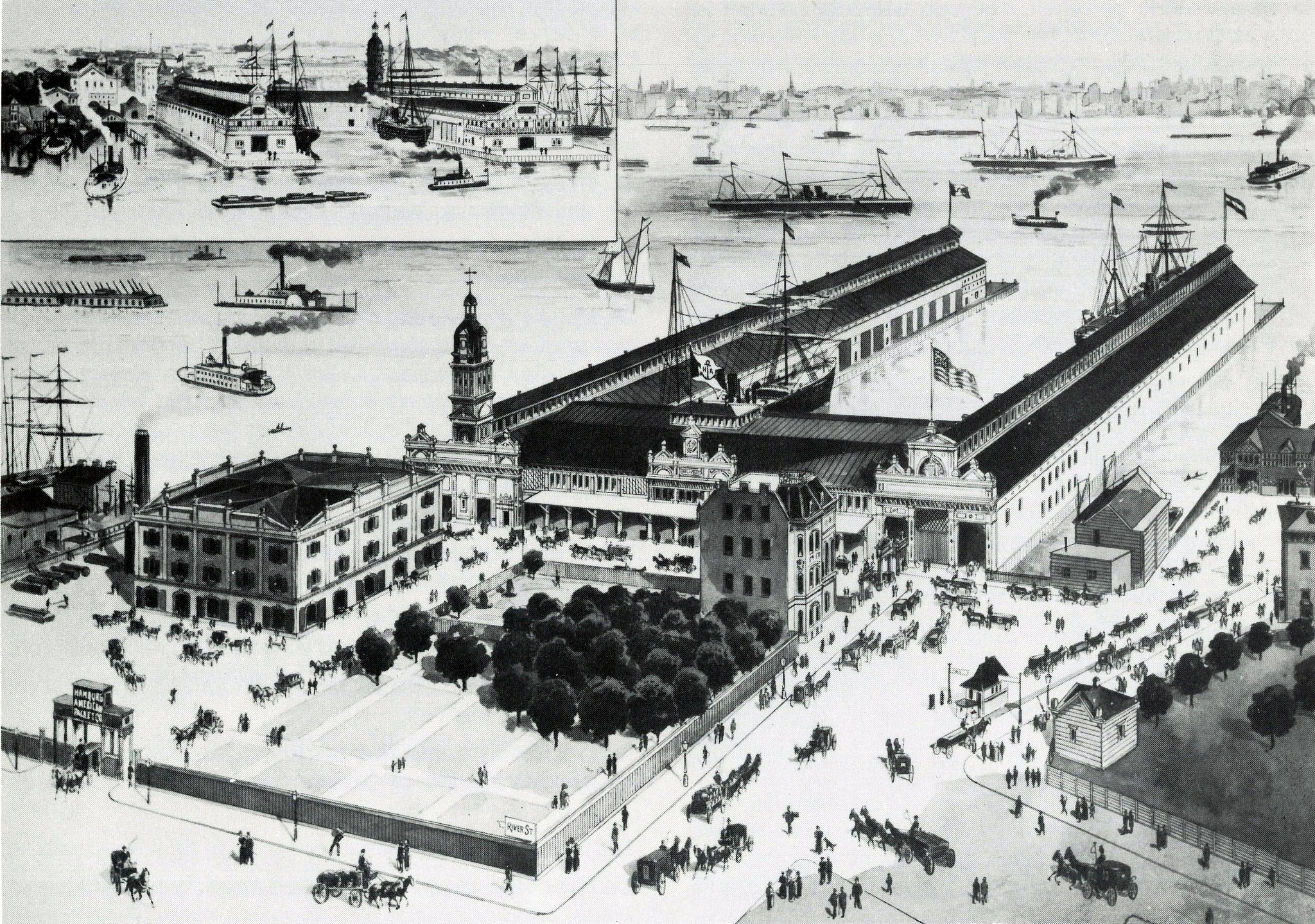 Unknown Author, Wikimedia Commons
Unknown Author, Wikimedia Commons
The Wrecking Crew
As the new year dawned, another wrecking crew traveled to the site of the Prinzessin Victoria Luise, hoping to try their hand at salvage—but they were in for a disturbing surprise. That month, a brutal earthquake hit Jamaica, killing hundreds of people, leveling 85% of the buildings in Kingston, and further sinking the remnants of the Prinzessin Victoria Luise.
The Moment Of Truth
Though Captain Brunswig was not there to testify, a maritime court was convened in Hamburg in May of 1907 to examine the evidence in the sinking of the Prinzessin Victoria Luise. Ultimately, they found Brunswig to have been negligent not just in the mistake regarding the lighthouse, but also in the fact that he’d maintained a full speed.
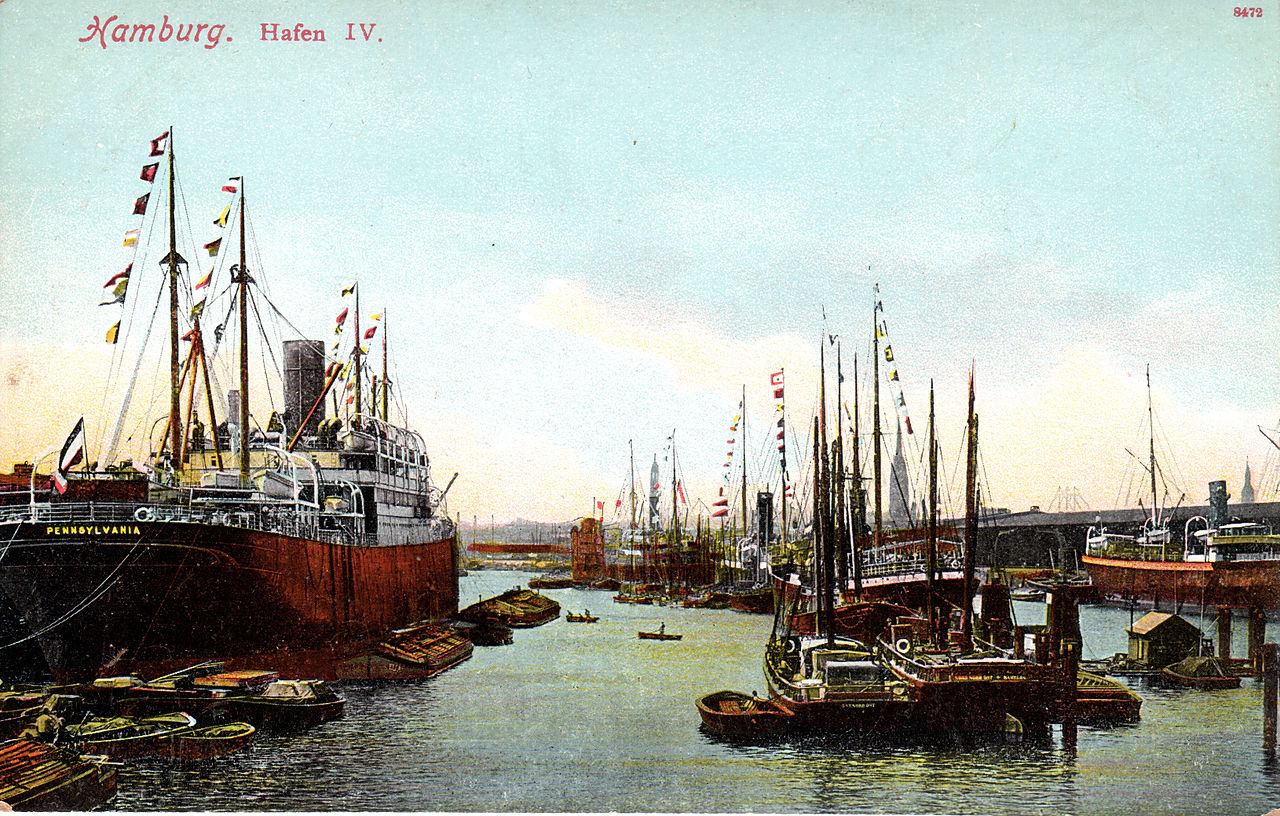 Postkartensammlung, Wikimedia Commons
Postkartensammlung, Wikimedia Commons
The Replacements
HAPAG tried to replace the Prinzessin Victoria Luise in a variety of ways. Their ship the Kronprinzessin Cecilie took over her route between Hoboken and Jamaica. Ballin announced that another ship, the Meteor, would be her successor. And later, in 1910, they renamed another ship the Victoria Luise.
It was like they were hoping that people would forget—but it wouldn’t be so easy.
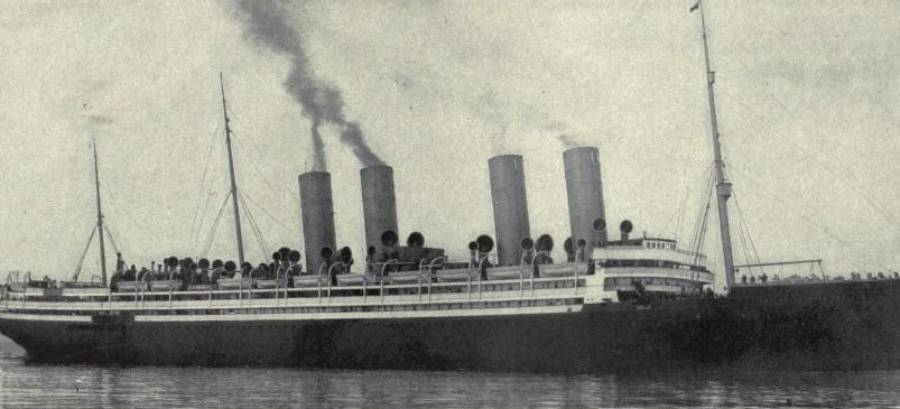 Stuart, Southampton., Wikimedia Commons
Stuart, Southampton., Wikimedia Commons
The Prinzessin Victoria Luise’s Impact
The world’s first cruise ship, the Prinzessin Victoria Luise, was grounded in 1906. Six years later, the Titanic sank, and two years after that, the Lusitania went down. Though the Prinzessin Victoria Luise suffered no casualties, it inadvertently played a major part in a series of events that destroyed the public’s confidence and interest in maritime travel.
And it would be a long climb back.
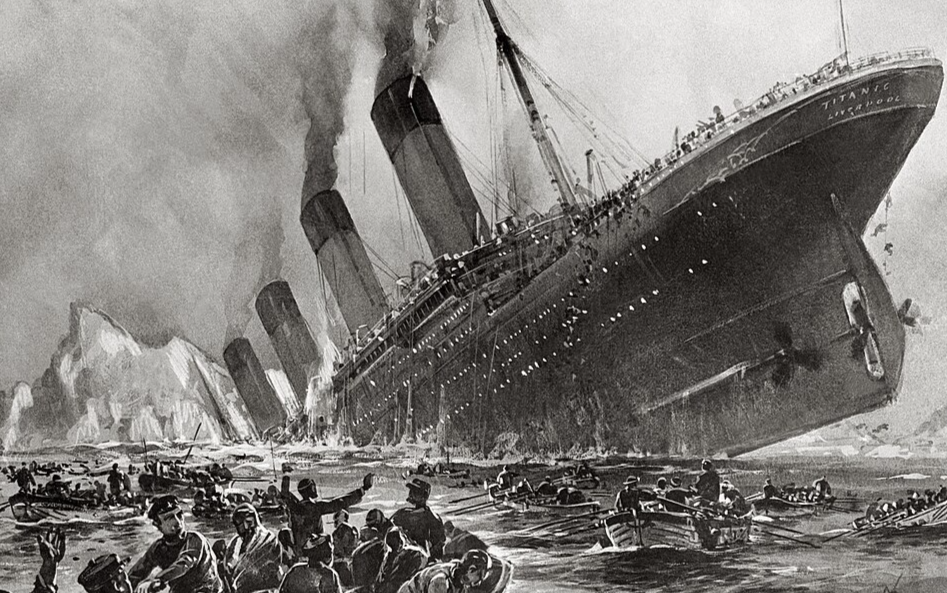 Willy Stöwer, Wikimedia Commons
Willy Stöwer, Wikimedia Commons
The First—But Not The Last
Interest in cruises as a travel option saw small resurgences throughout the early and mid-20th century—only for its big boom to come from an unexpected place. It was the success of the TV show The Love Boat that played a major part in the popularity of cruises. Today’s megaliners would make the Prinzessin Victoria Luise look like a bathtub tugboat. The largest cruise ship currently in operation, Royal Caribbean’s Wonder of the Seas, could fit 54 of her on board.
But as the dark fate of the Prinzessin Victoria Luise proves, all it takes is one small mistake—one instance of human error—to sink a ship.

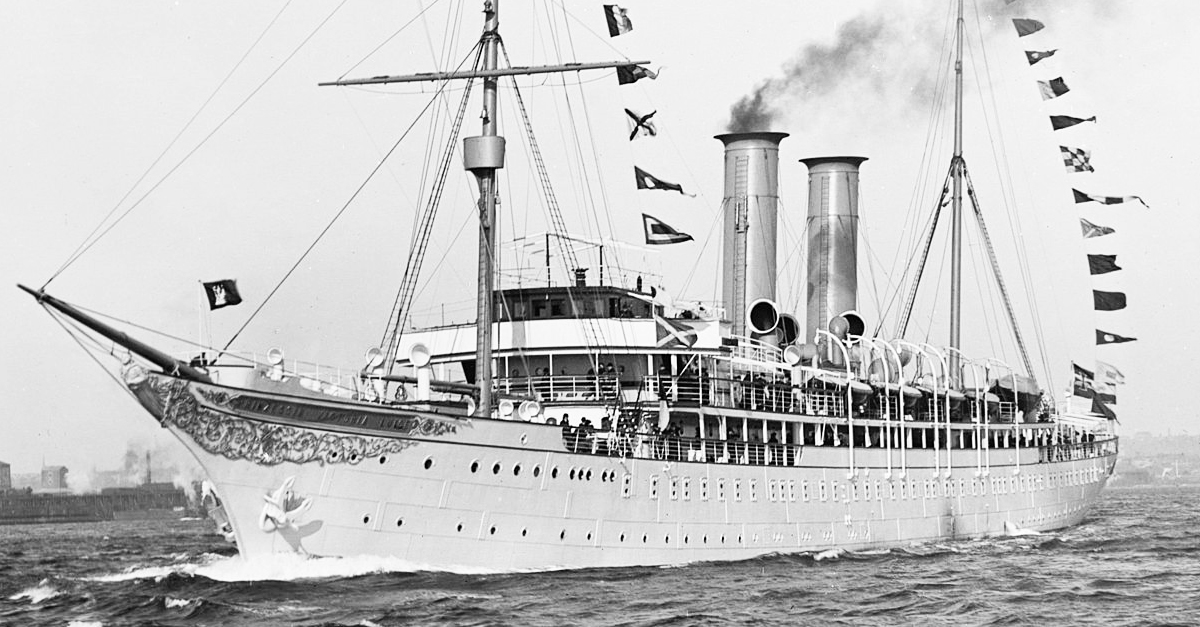
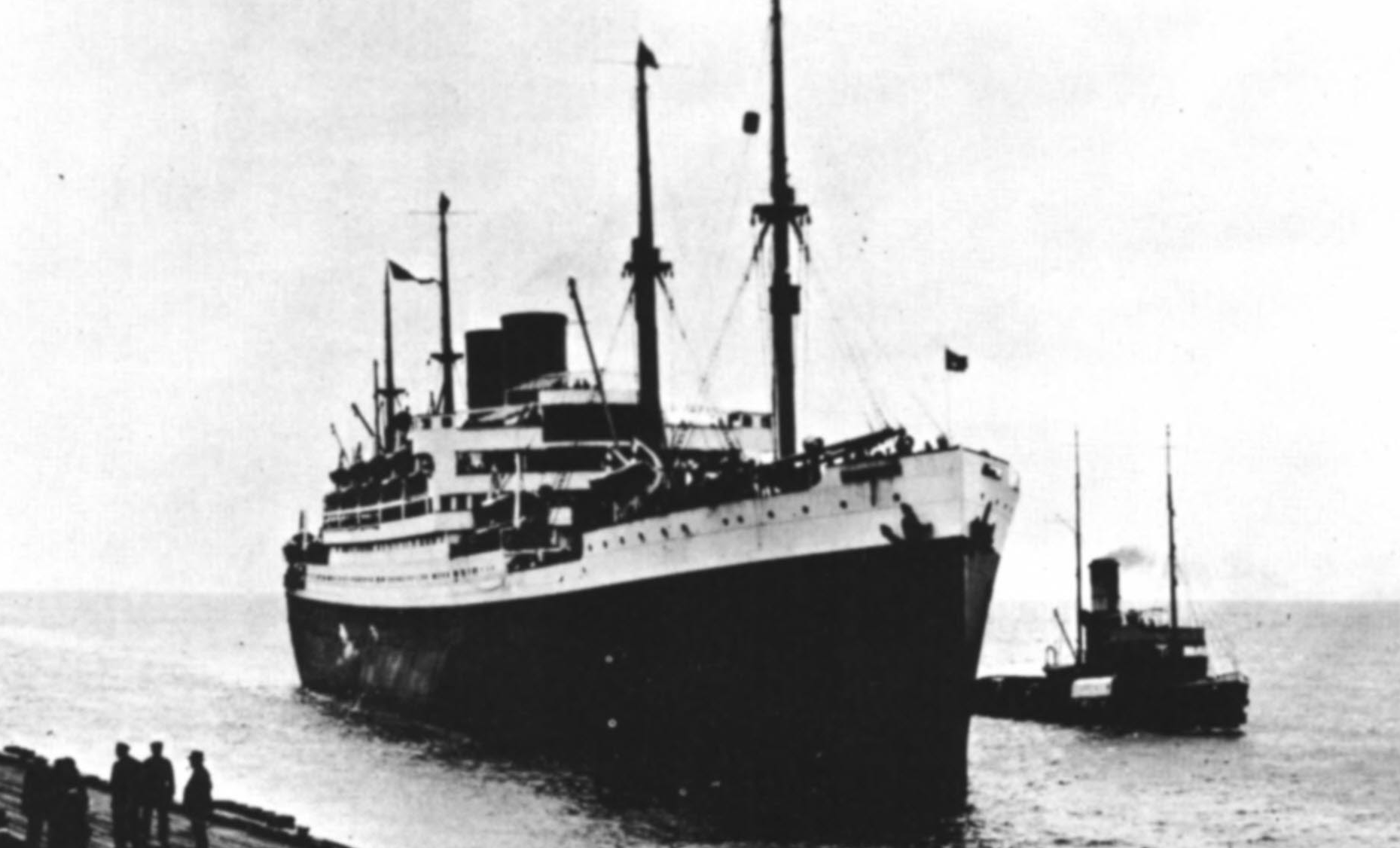
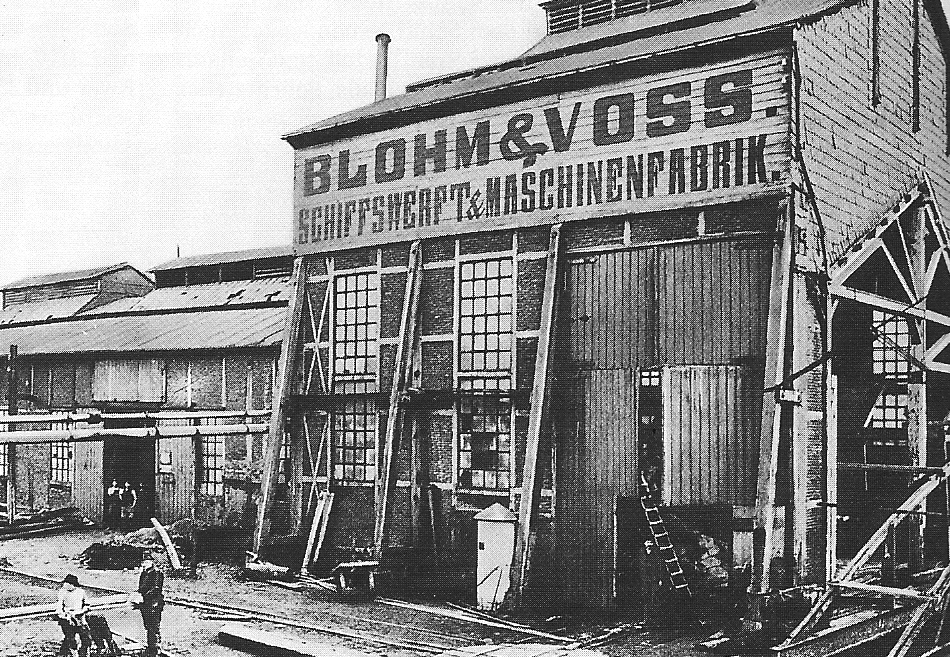
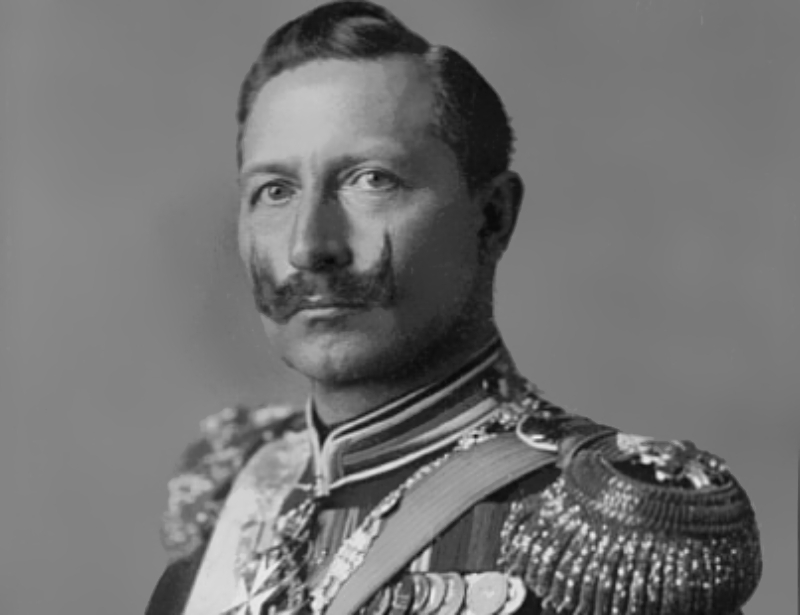
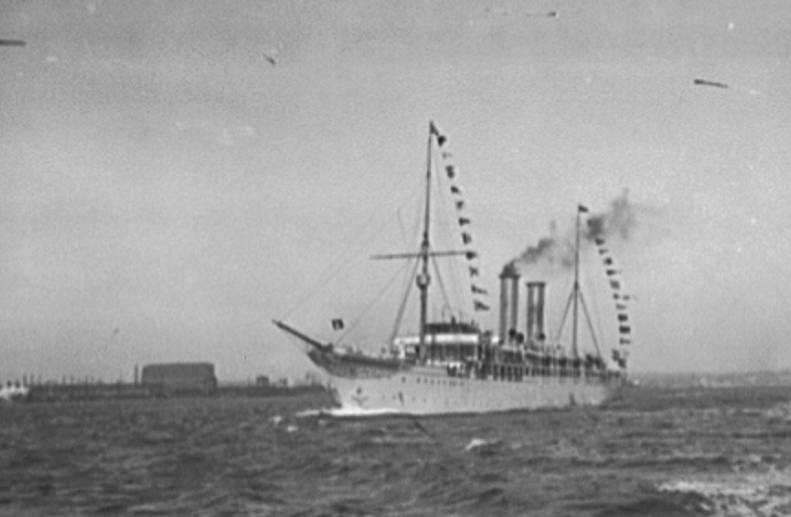
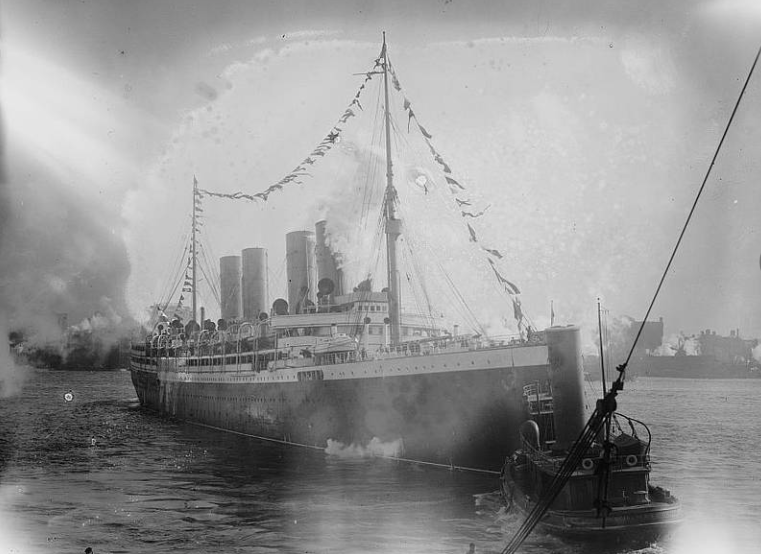
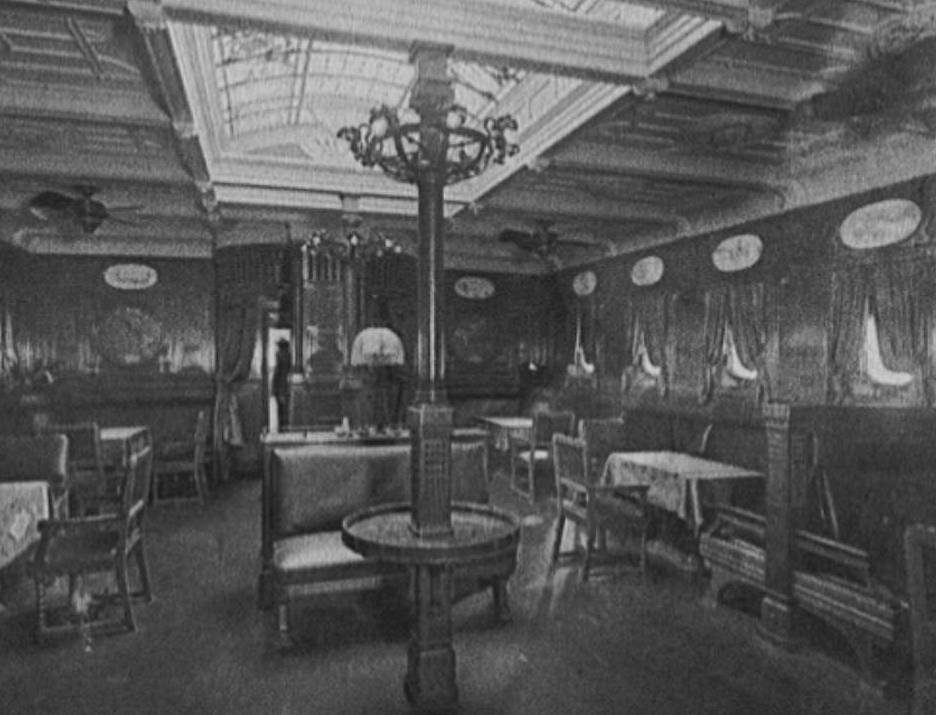
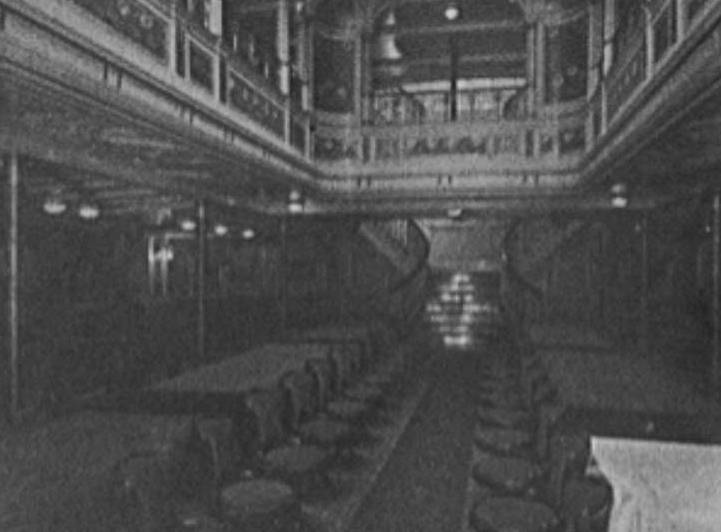
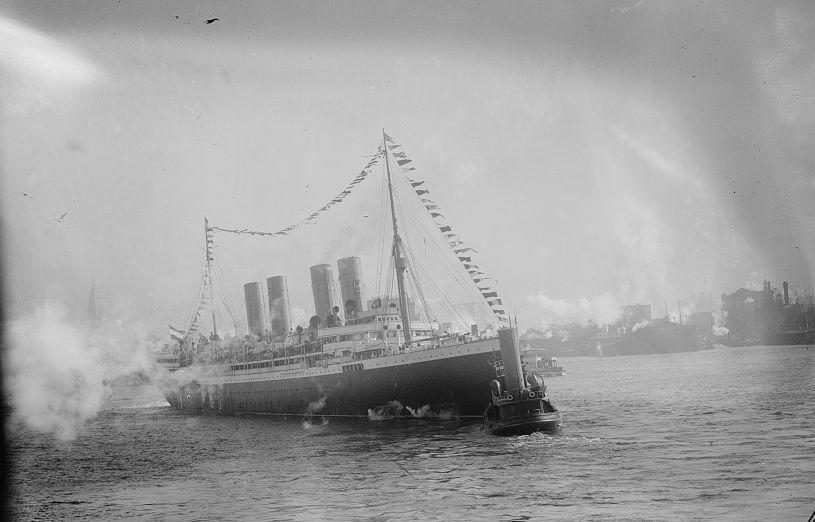
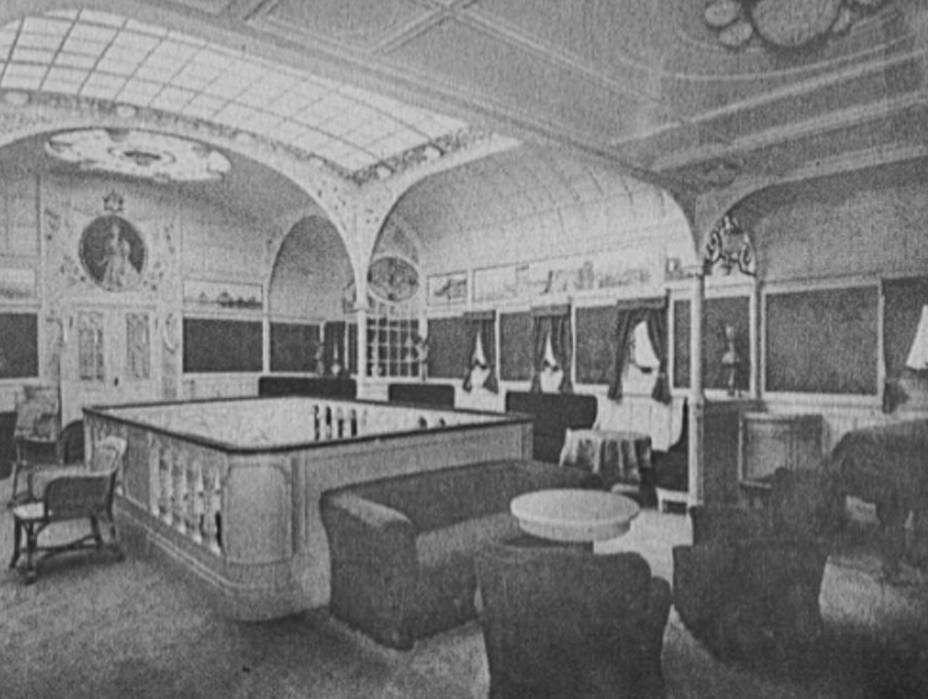
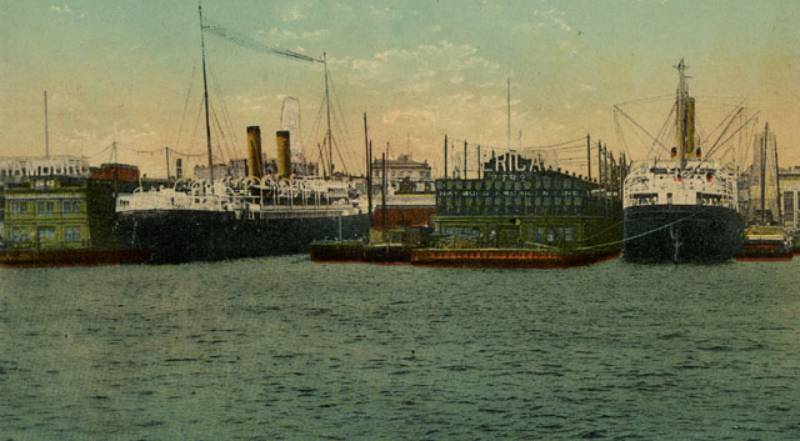
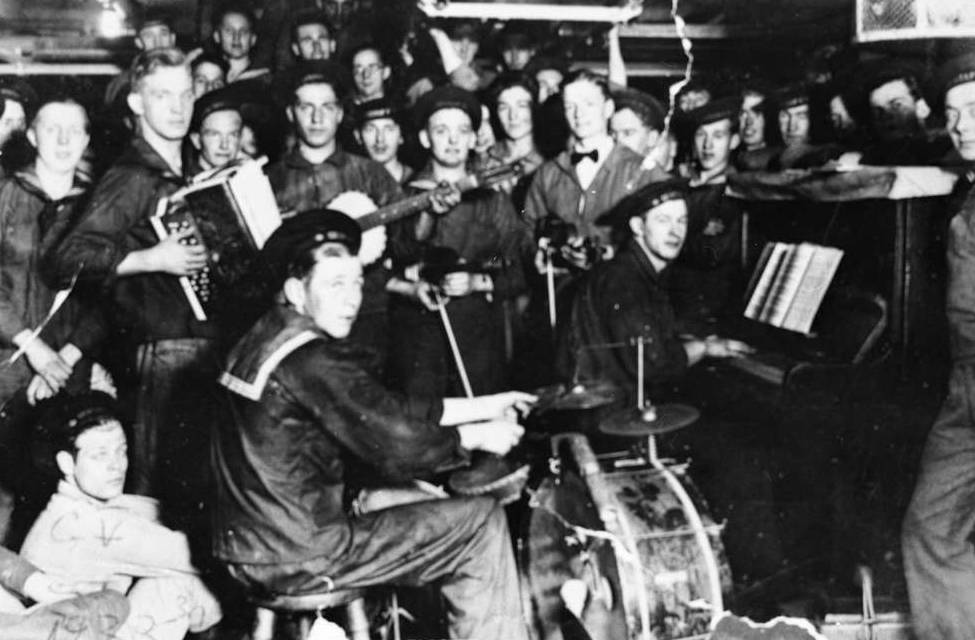
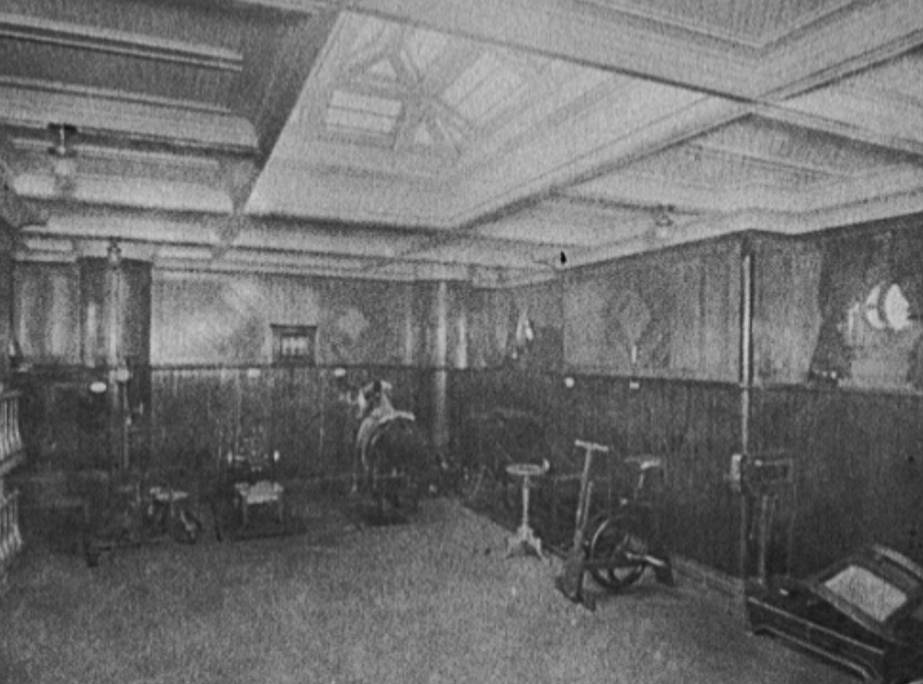
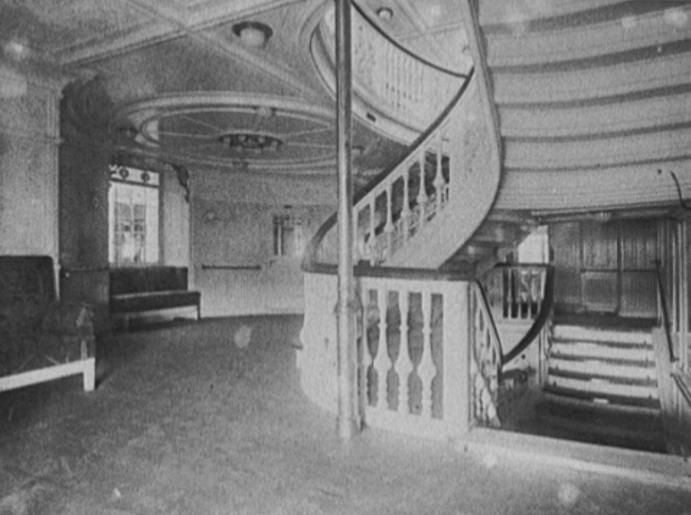
![Ocean liners: [S.S. Deutschland]](https://www.factinate.com/storage/app/media/splashtravels/2024/12/6/Screenshot%202024-12-06%20160429.png)
